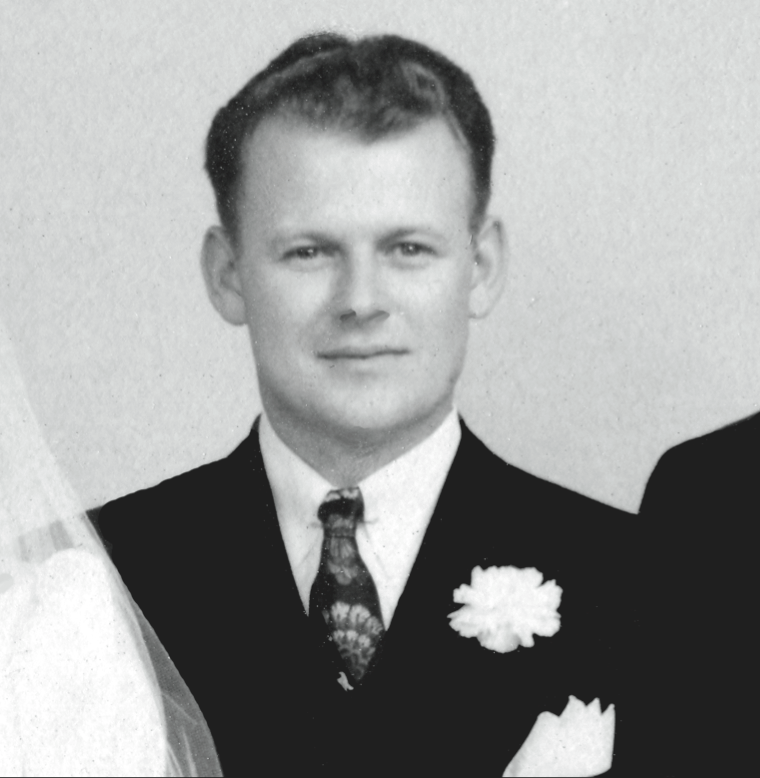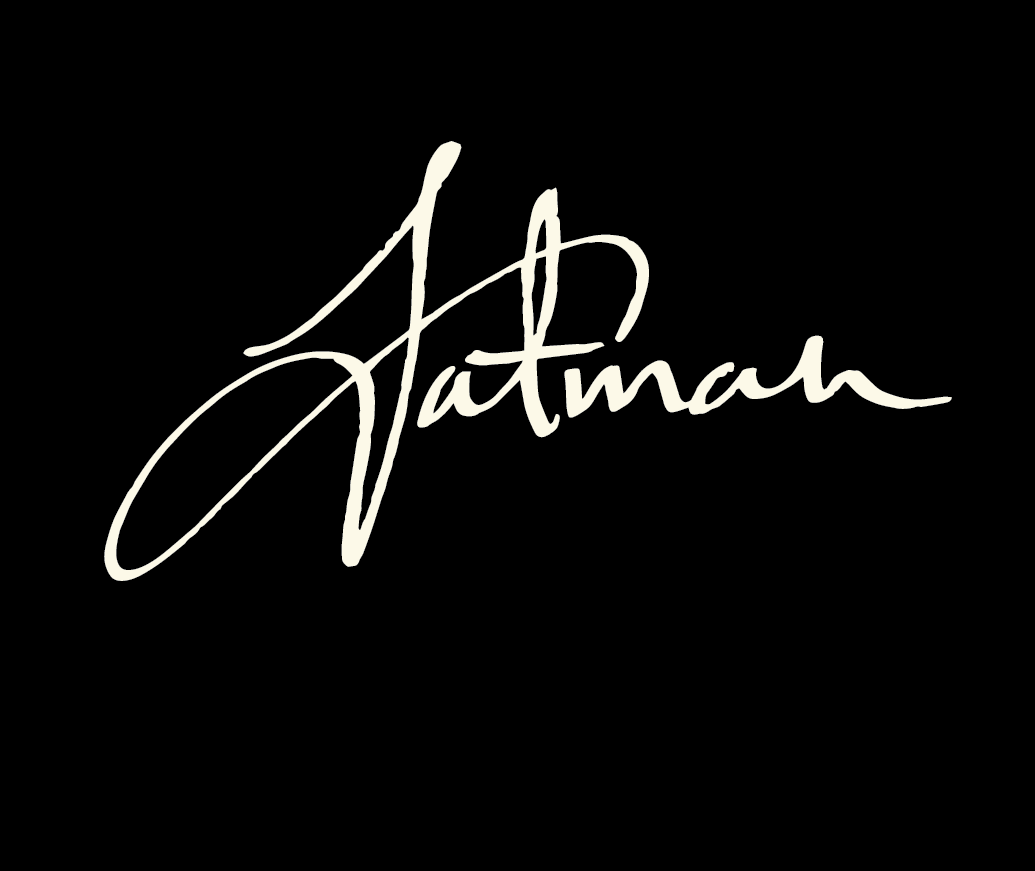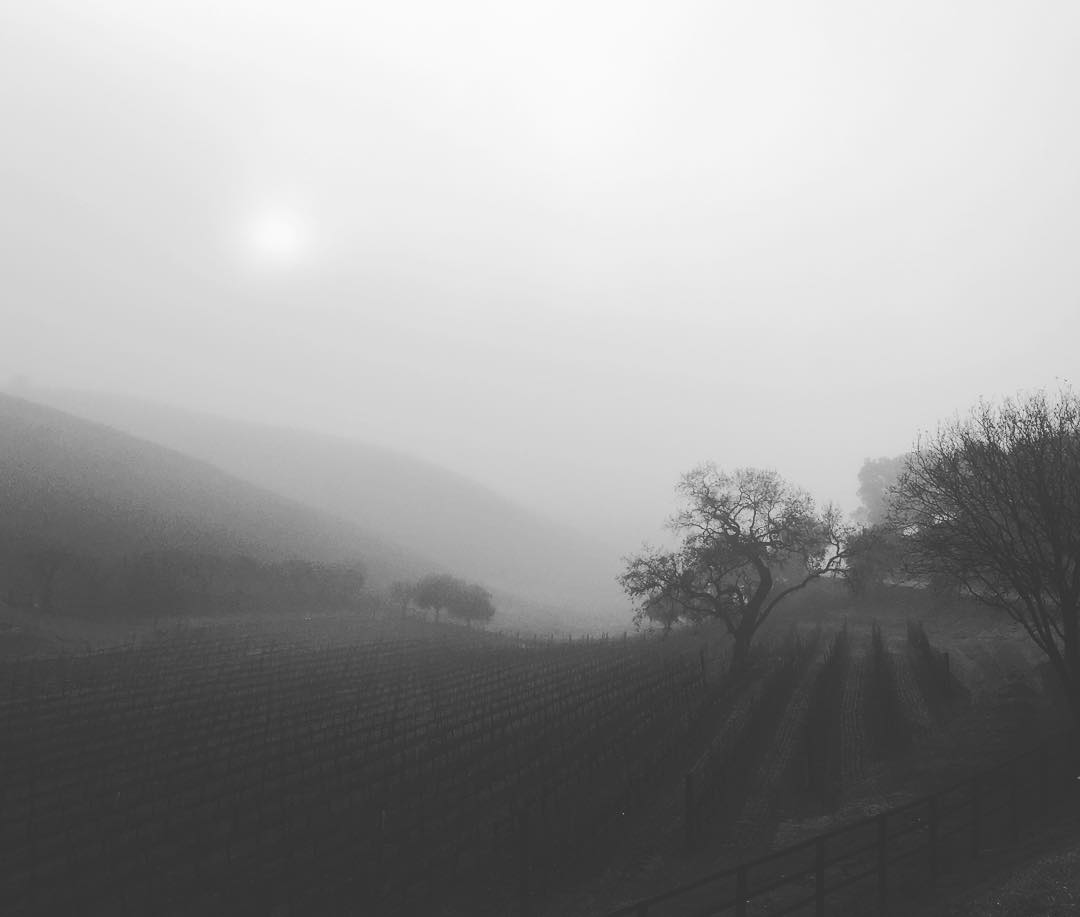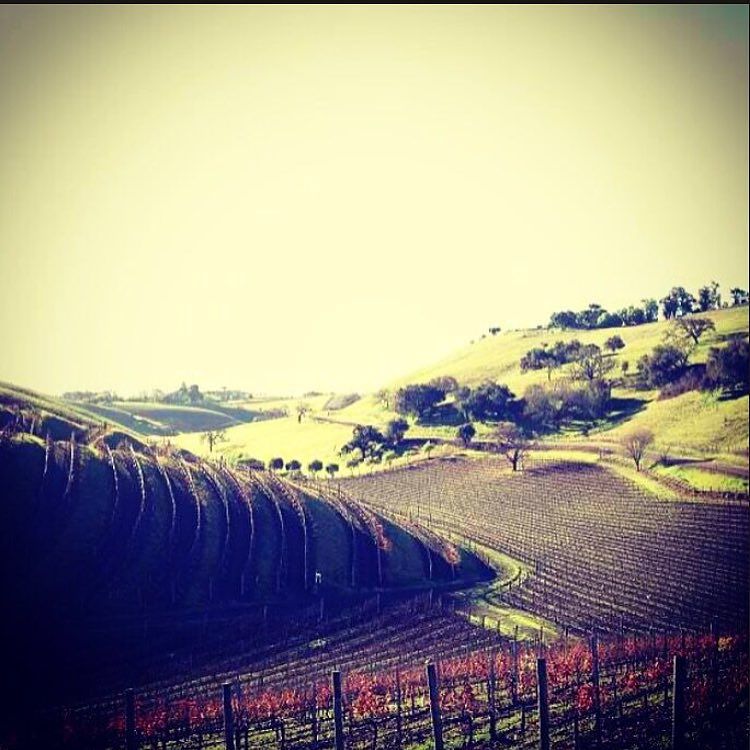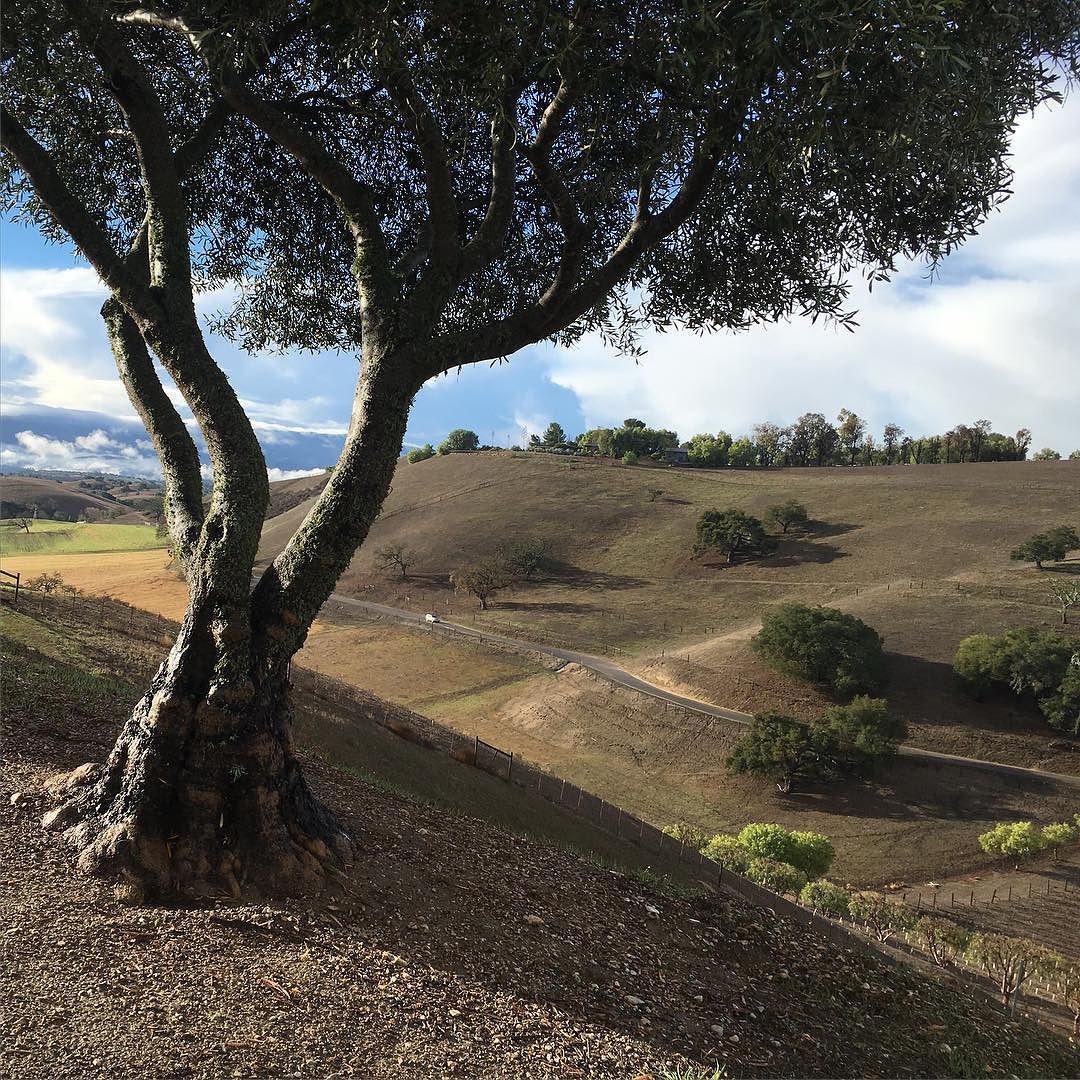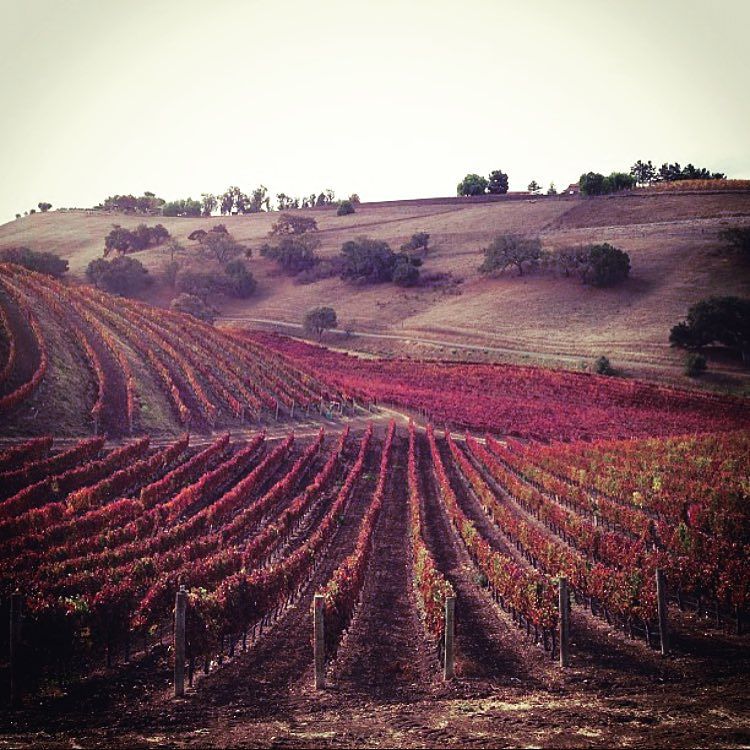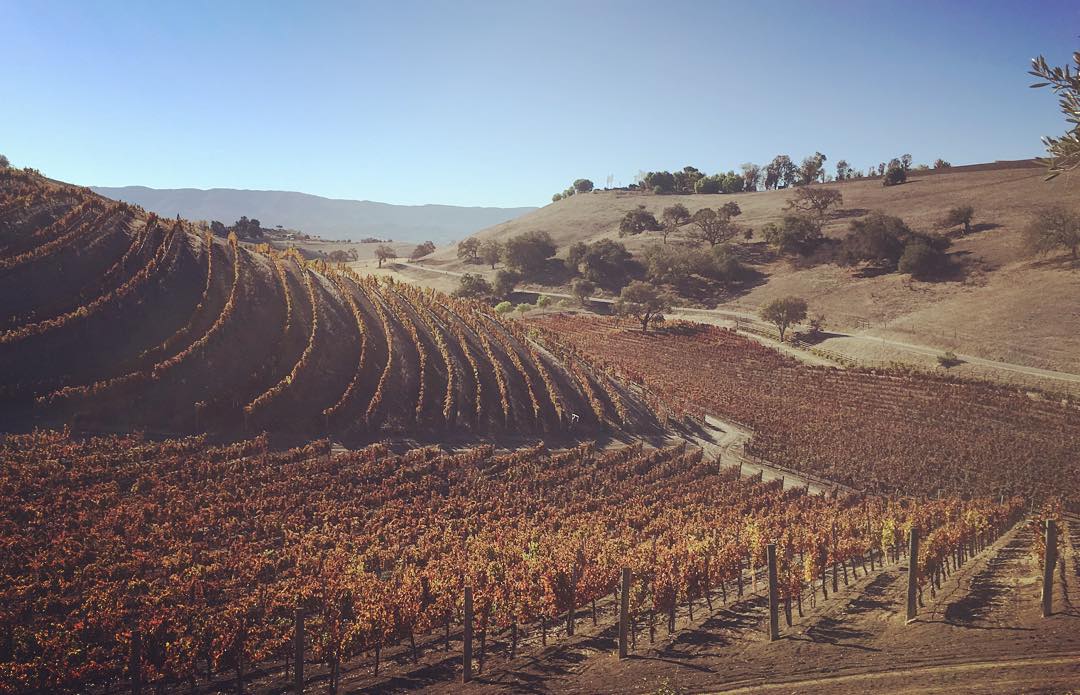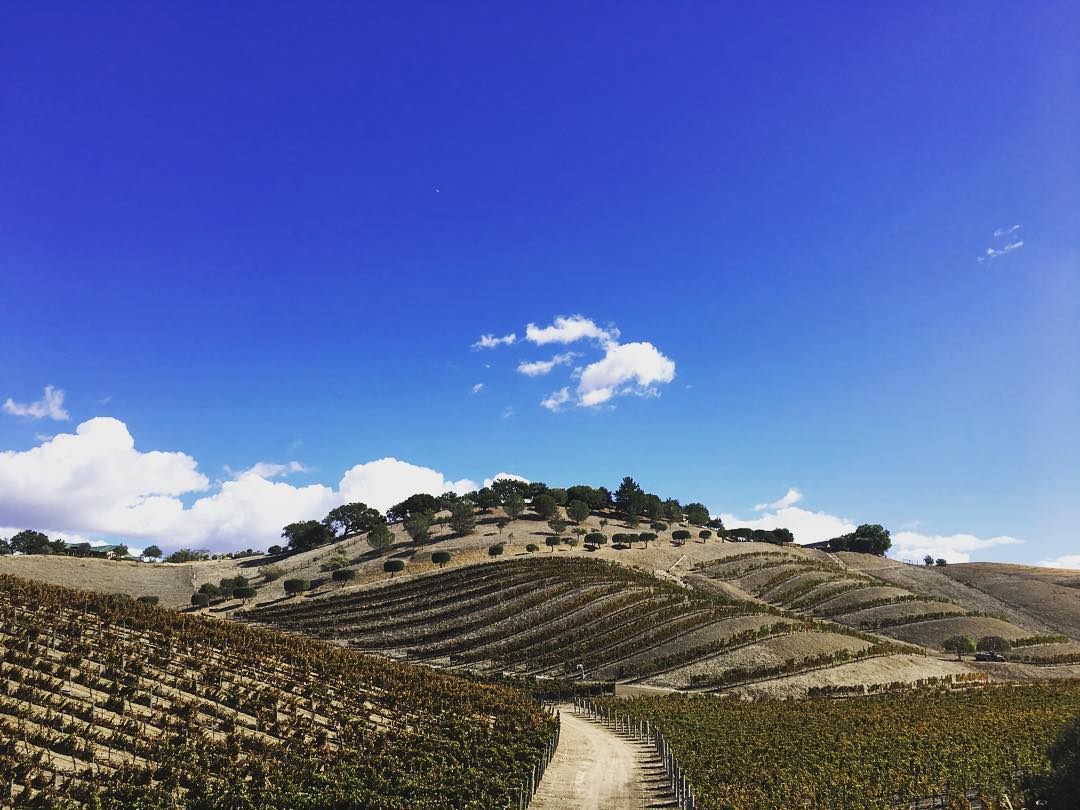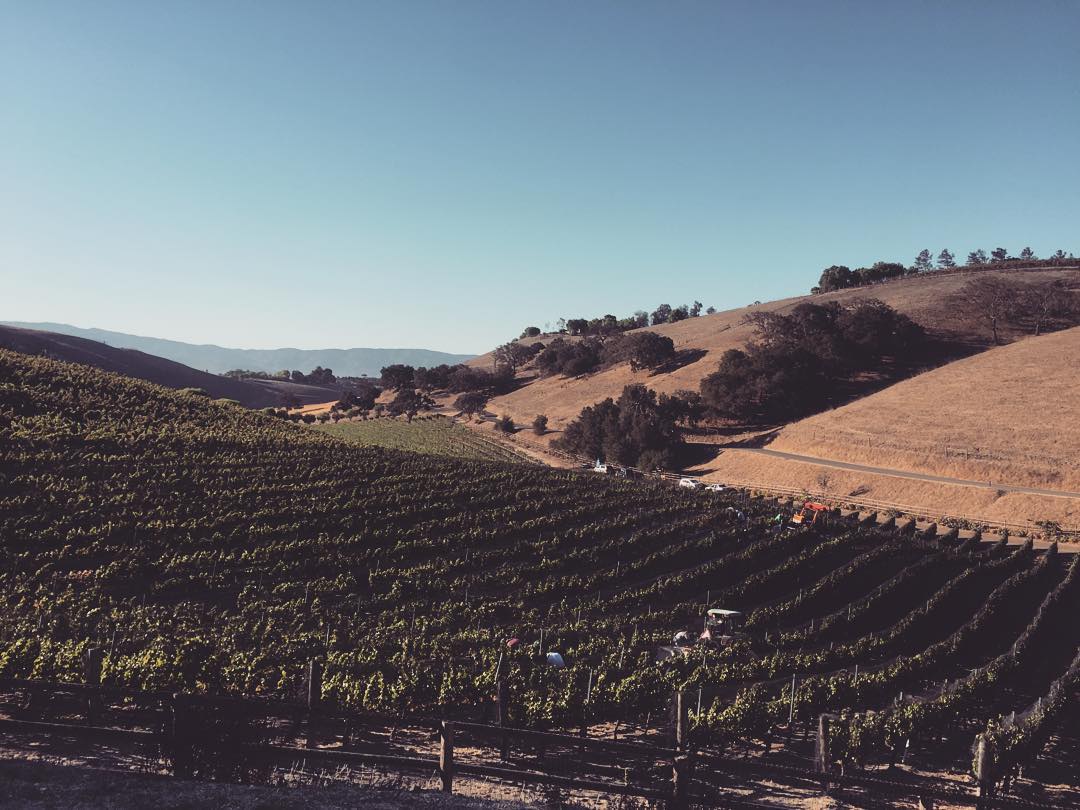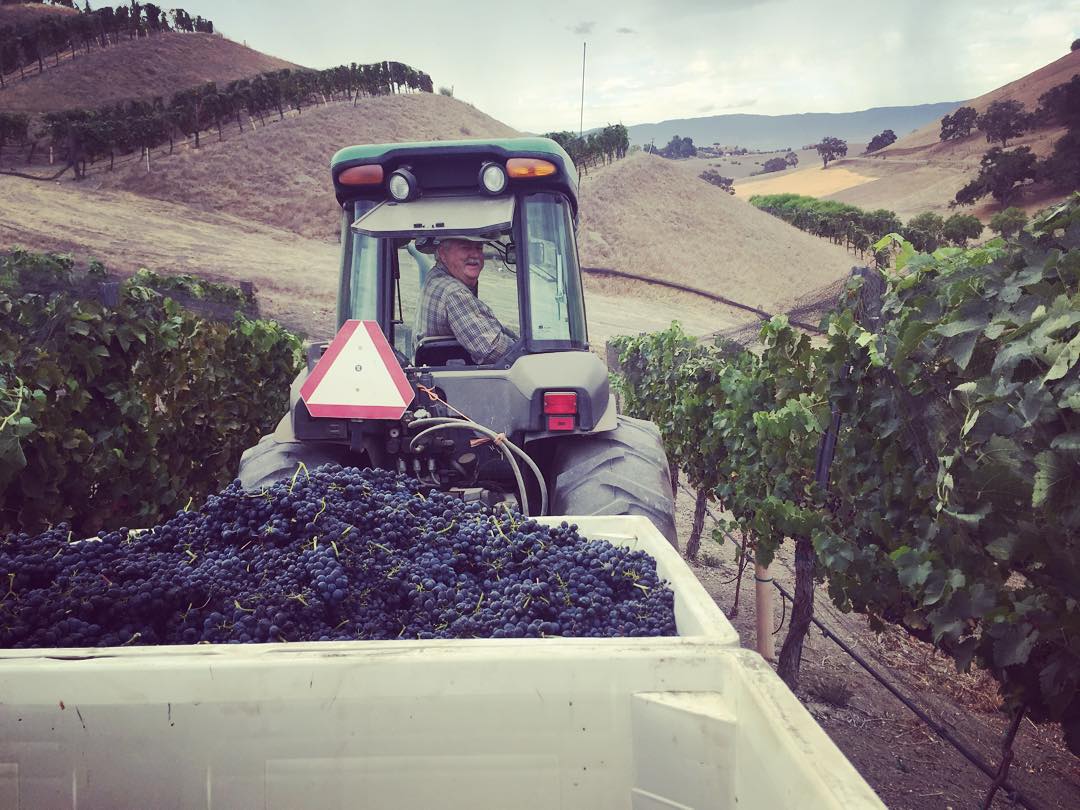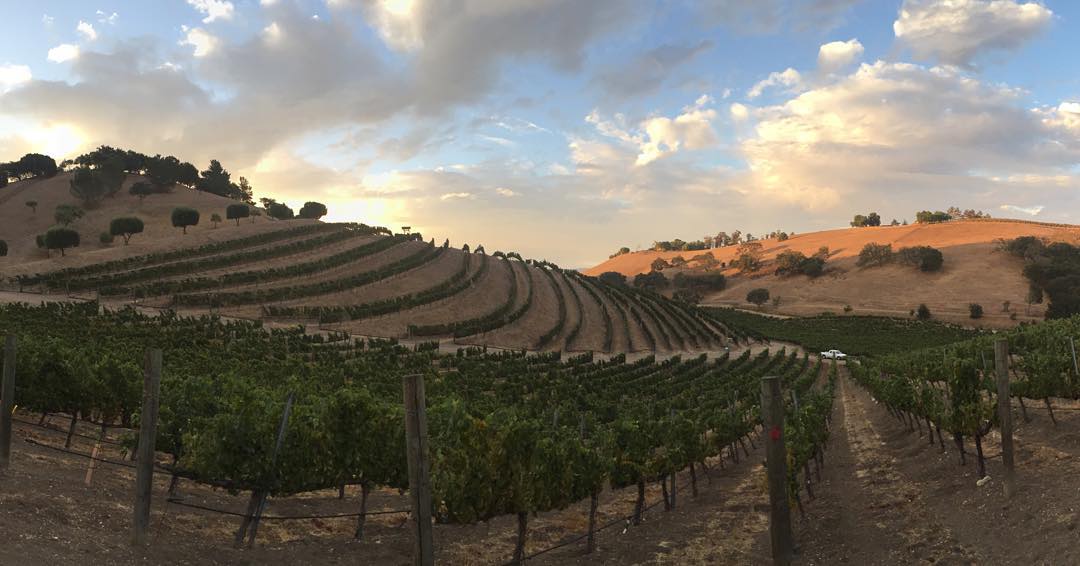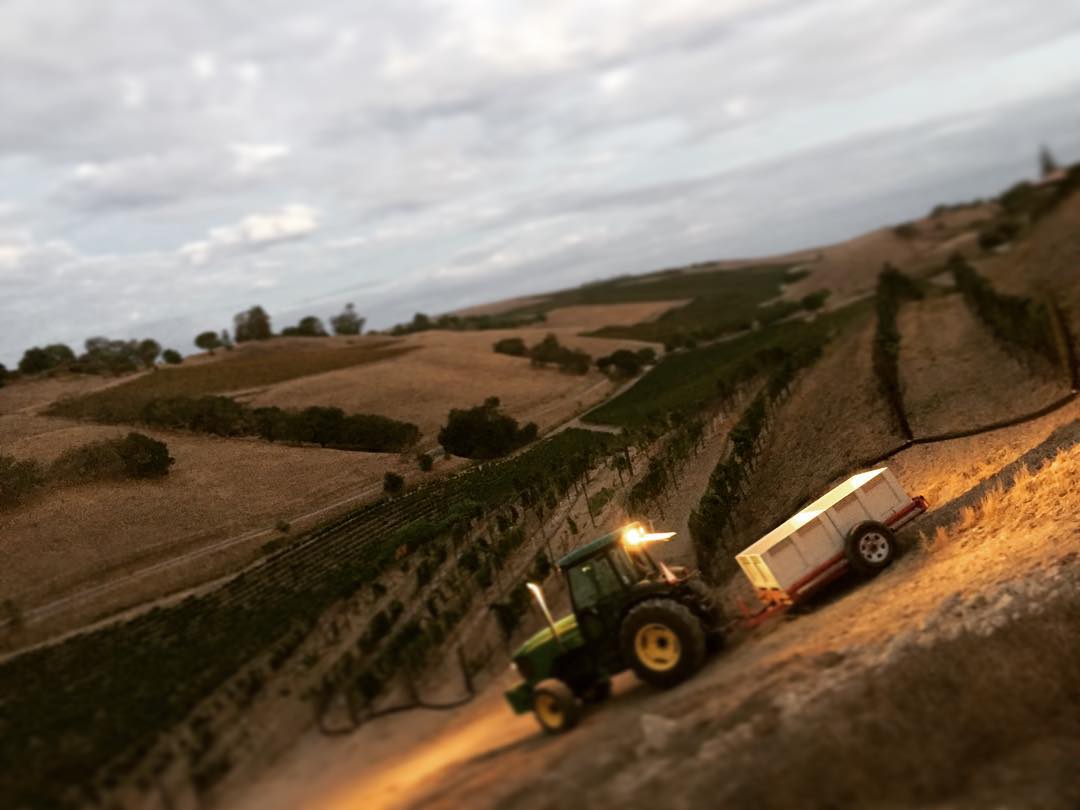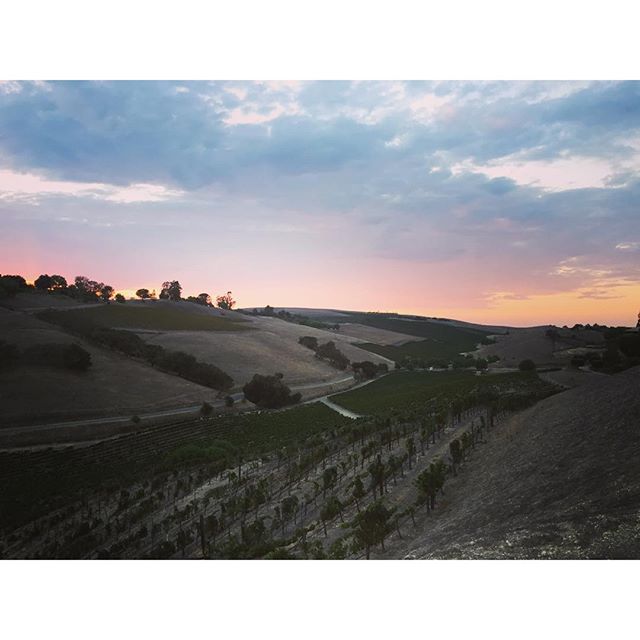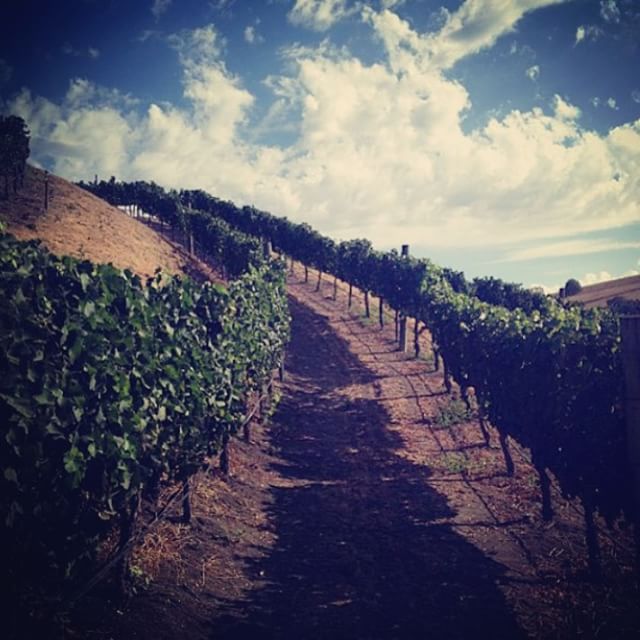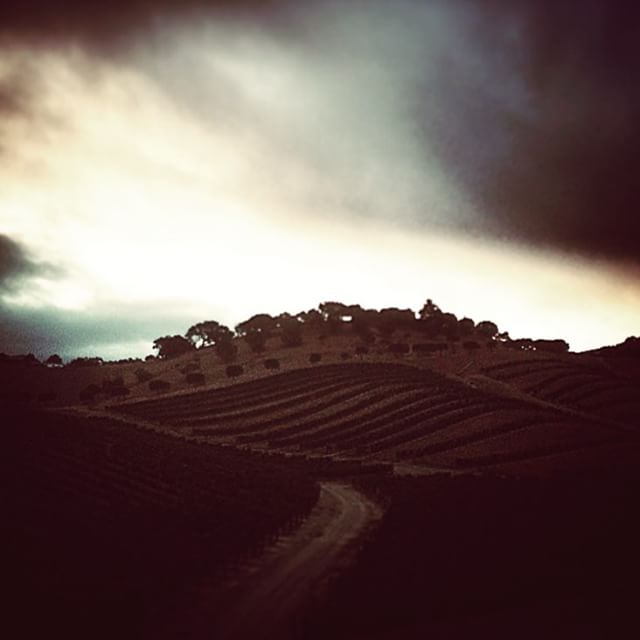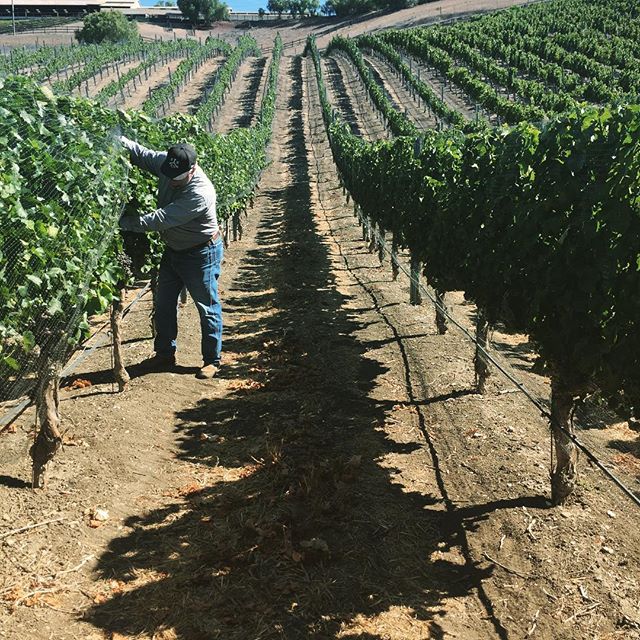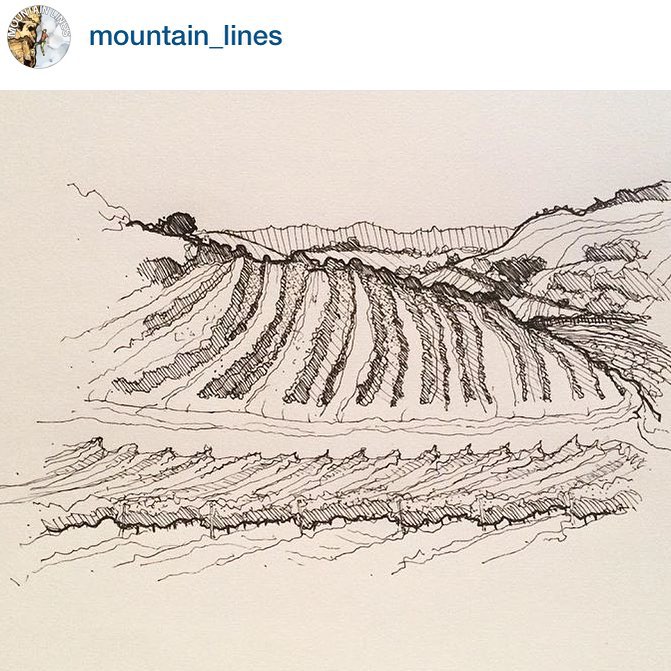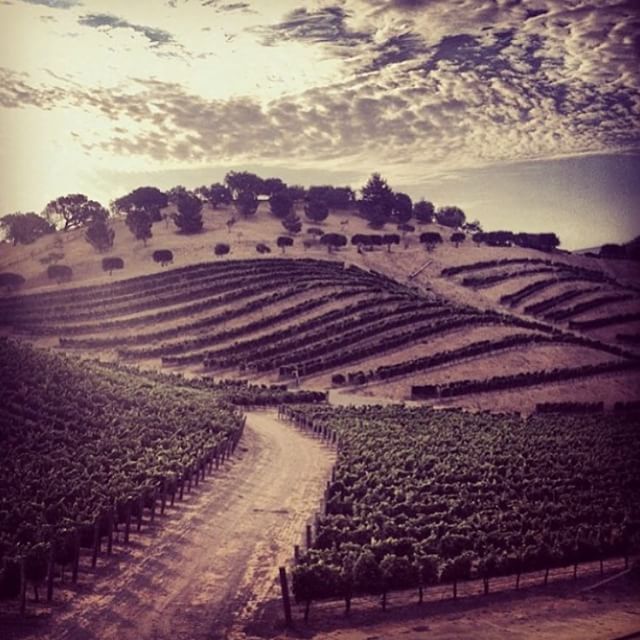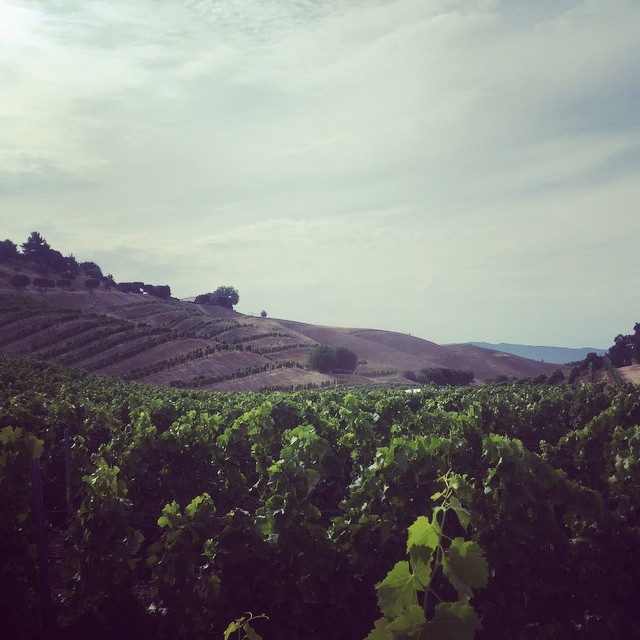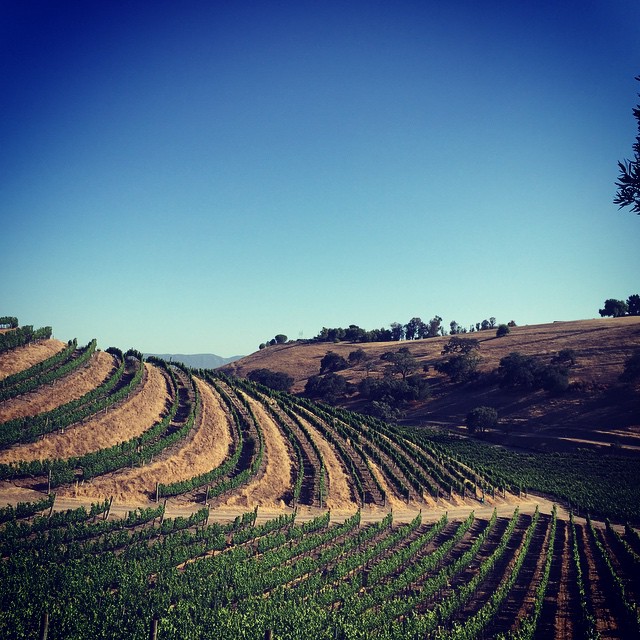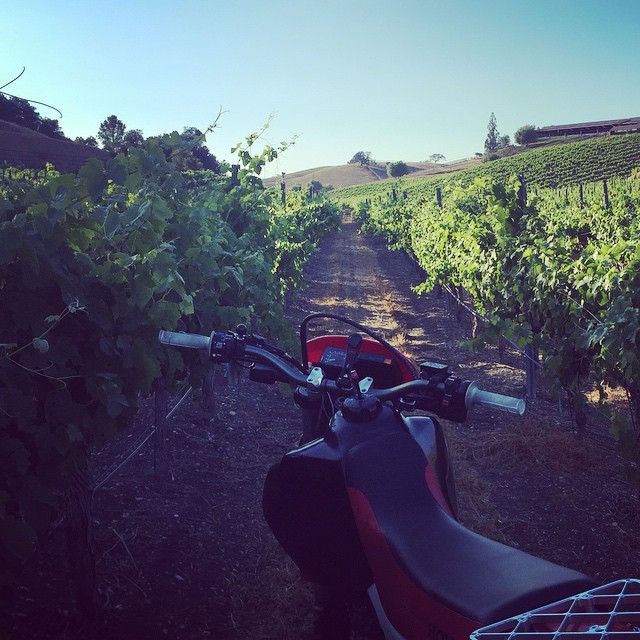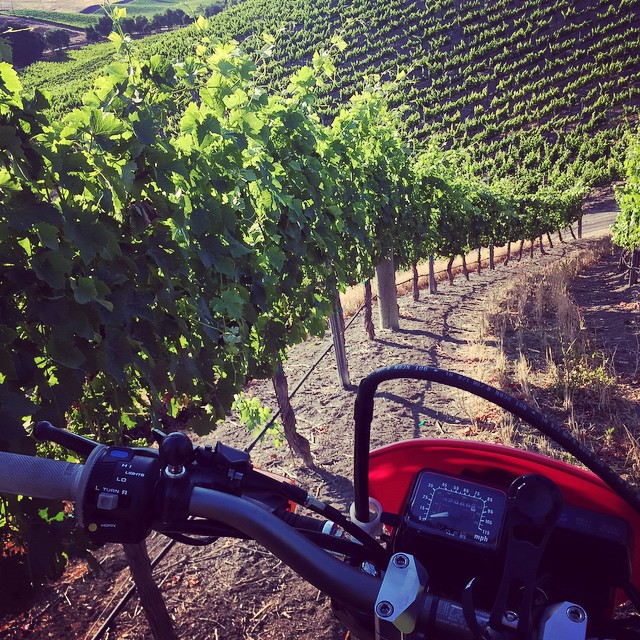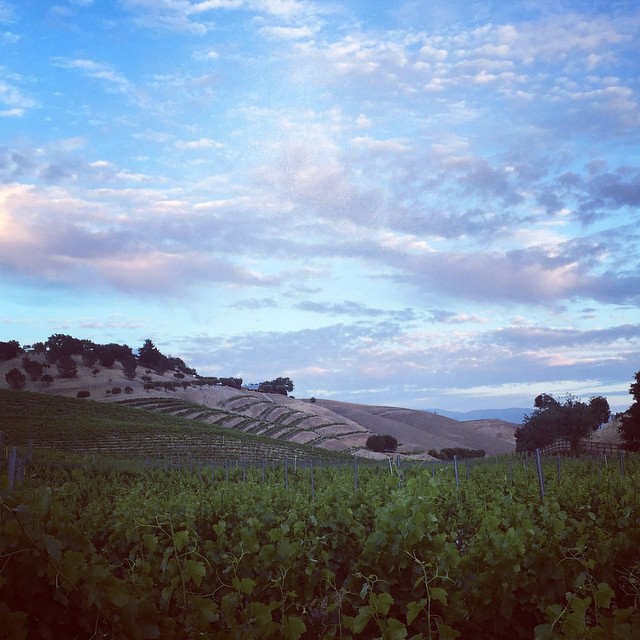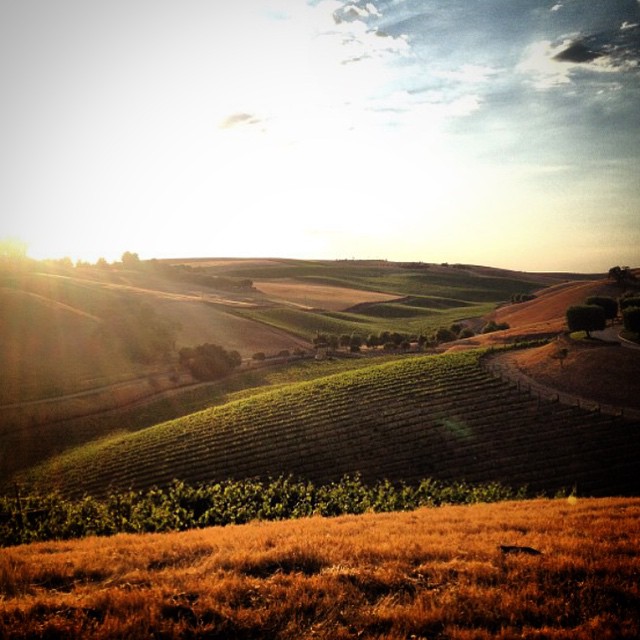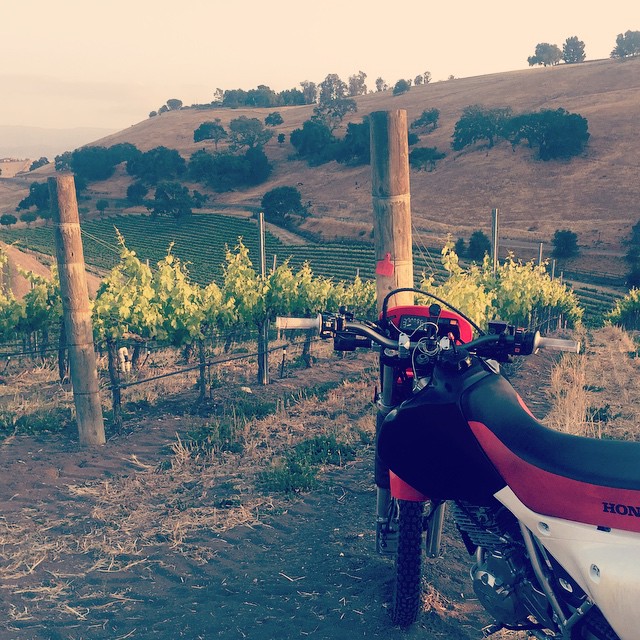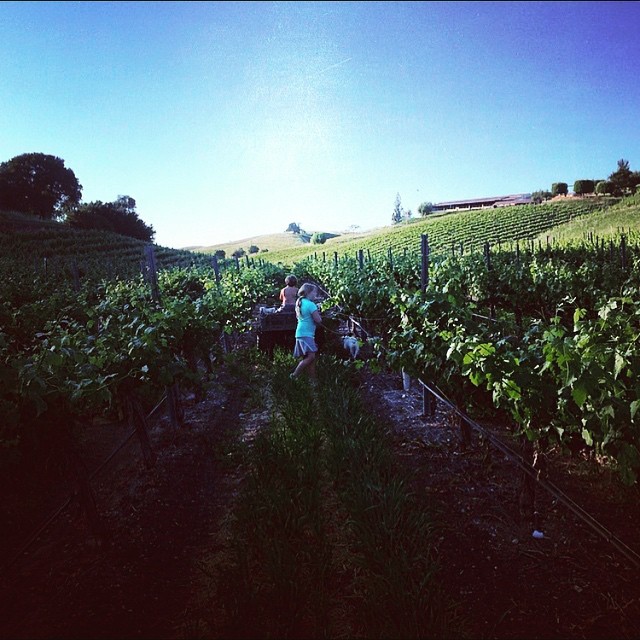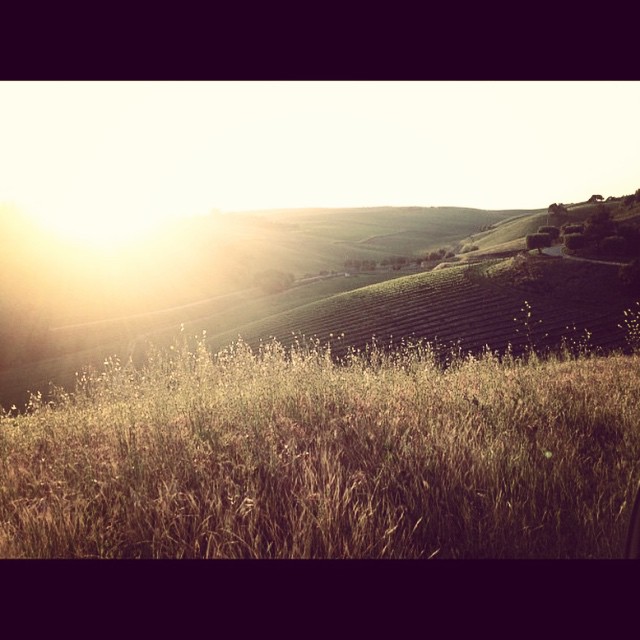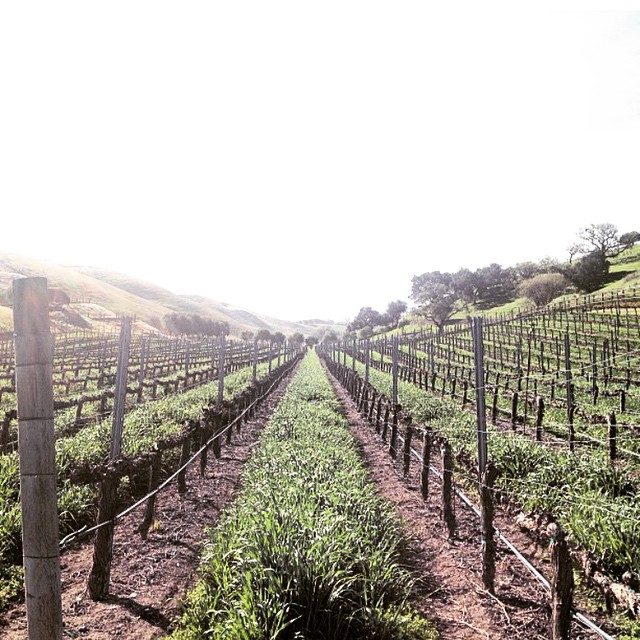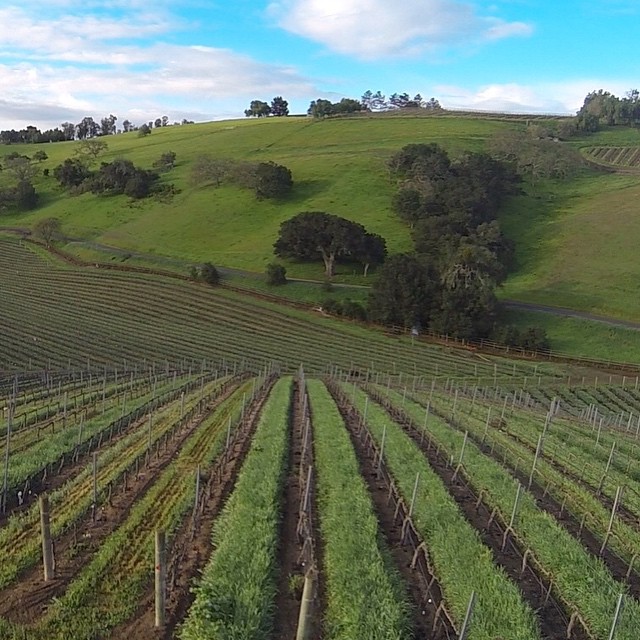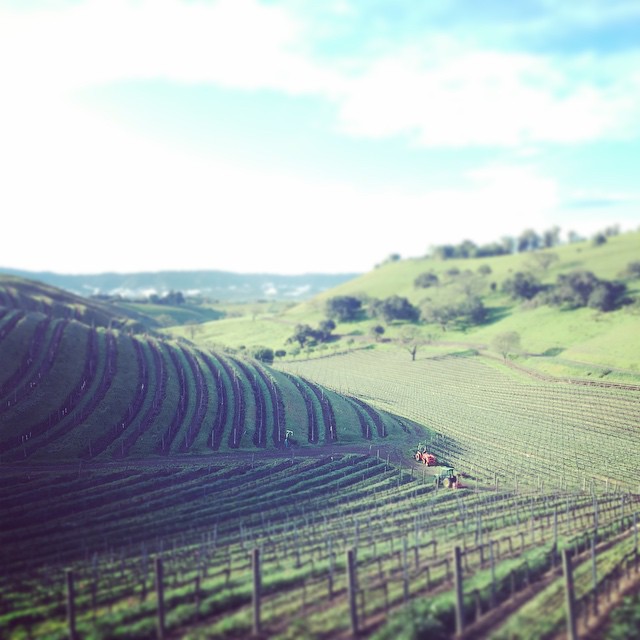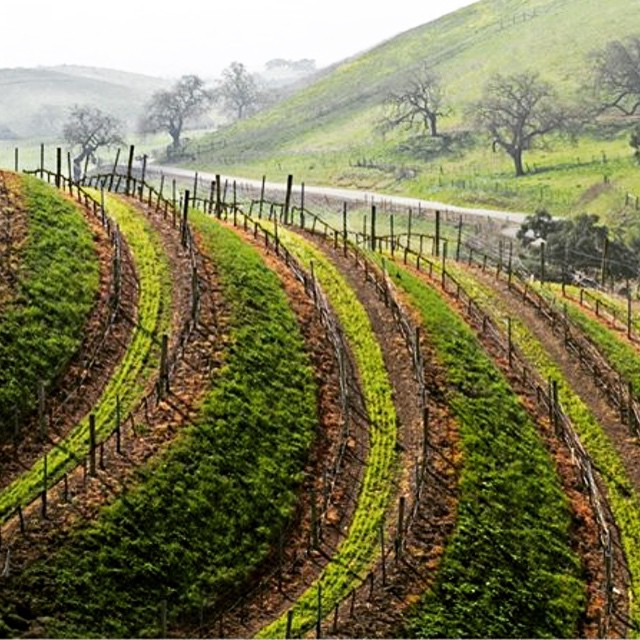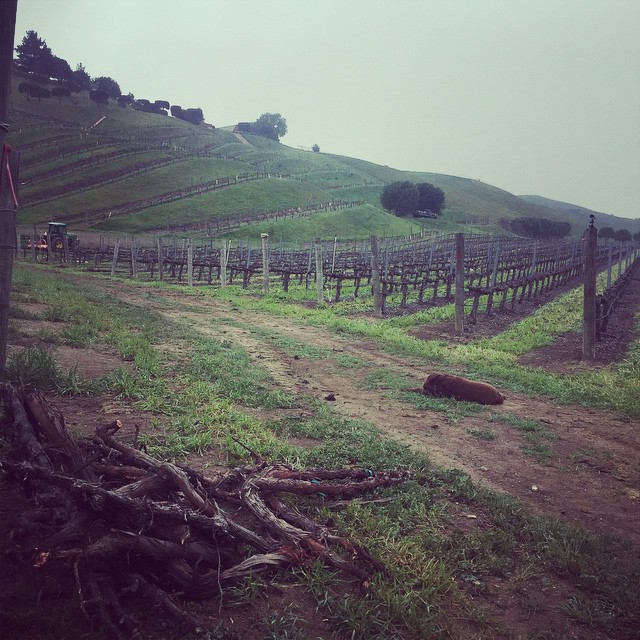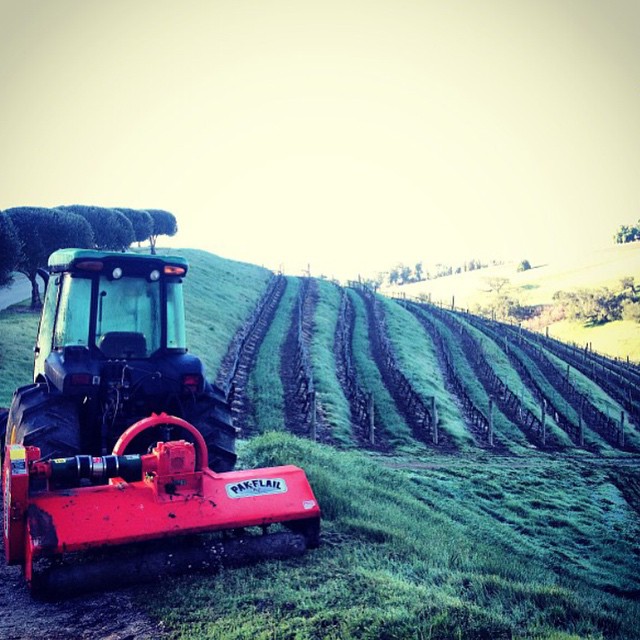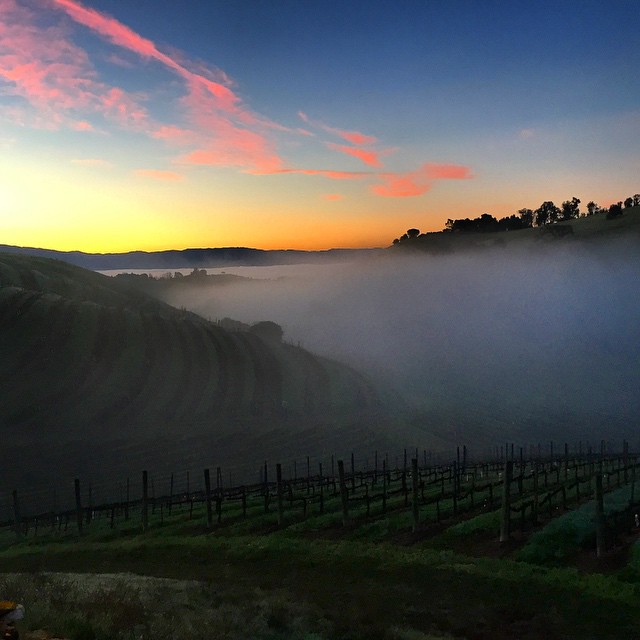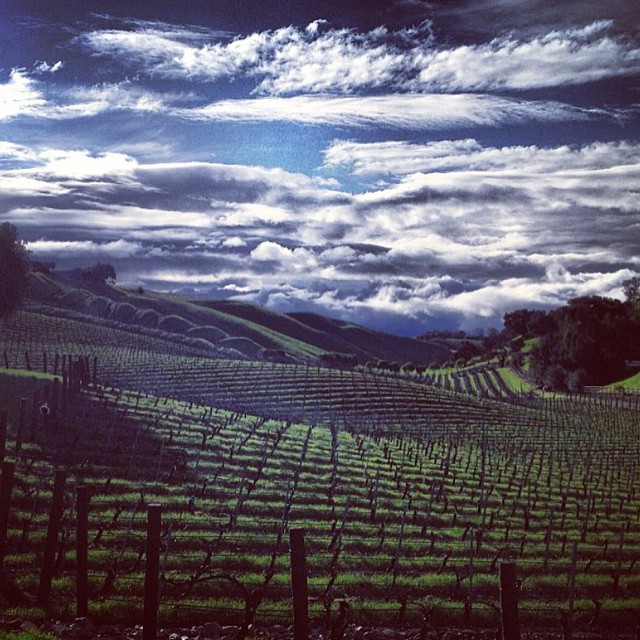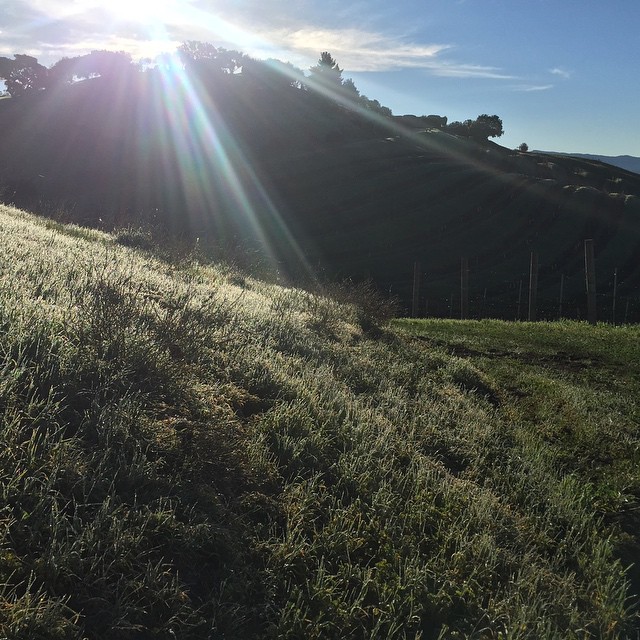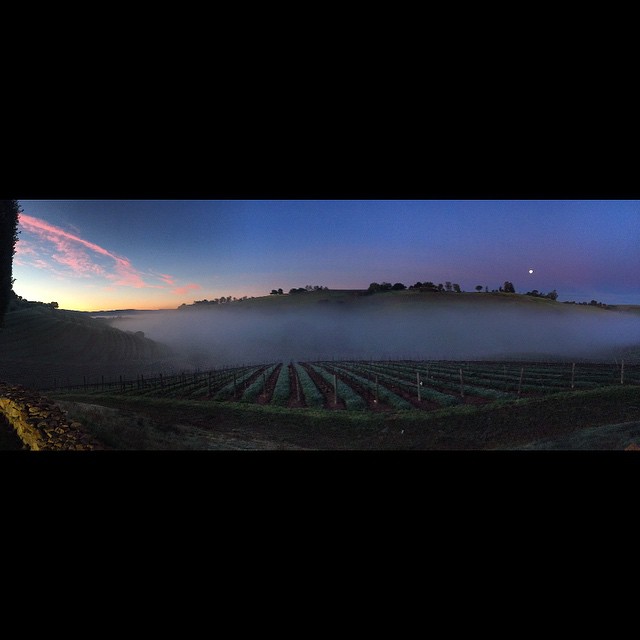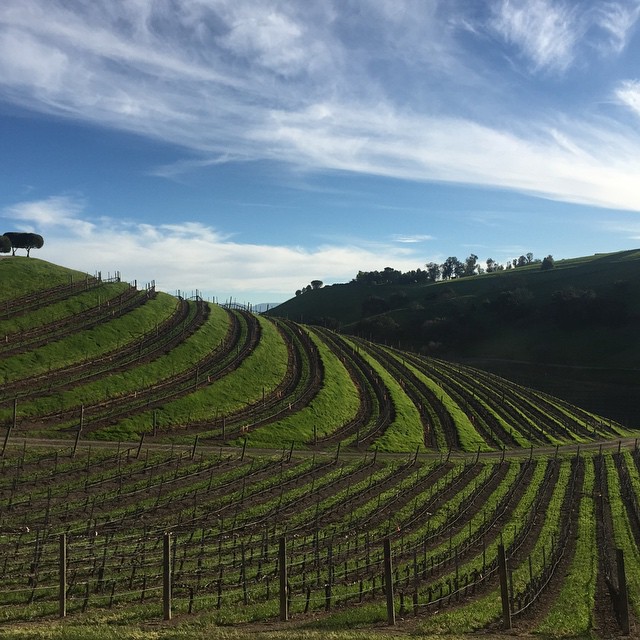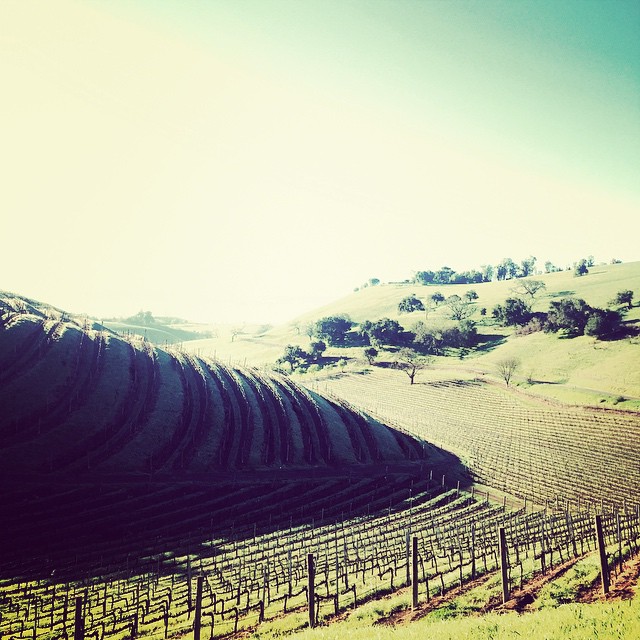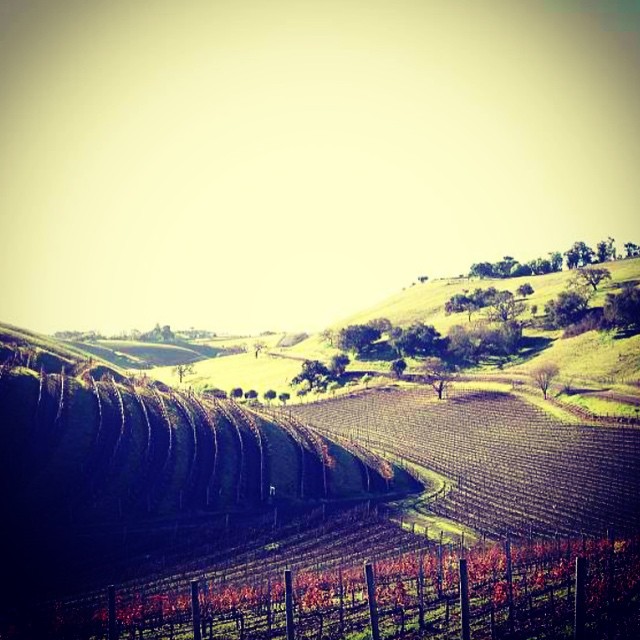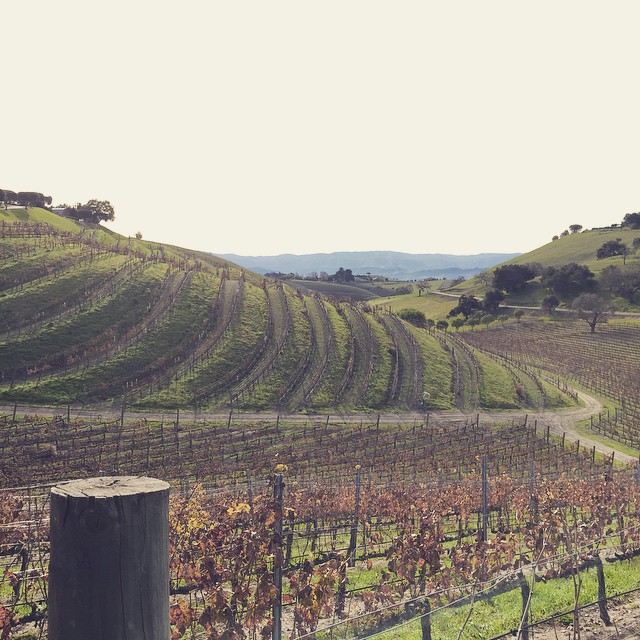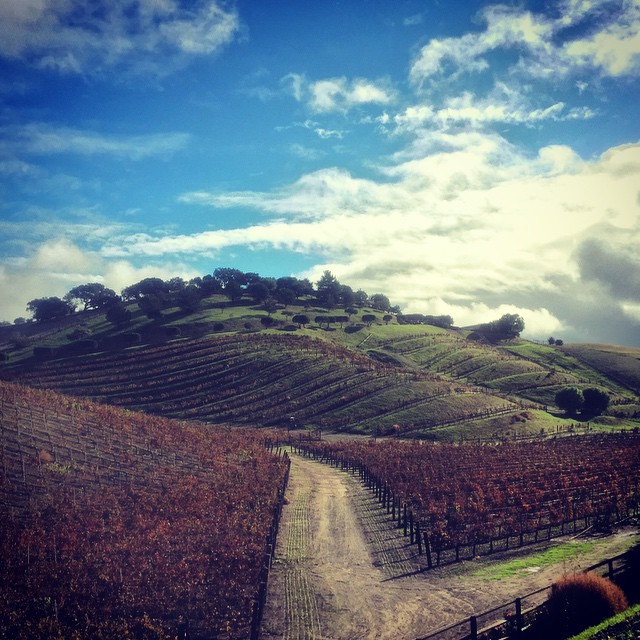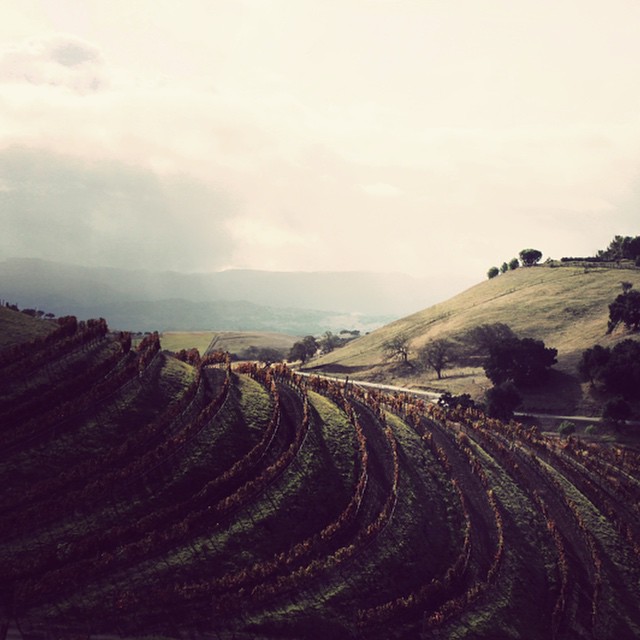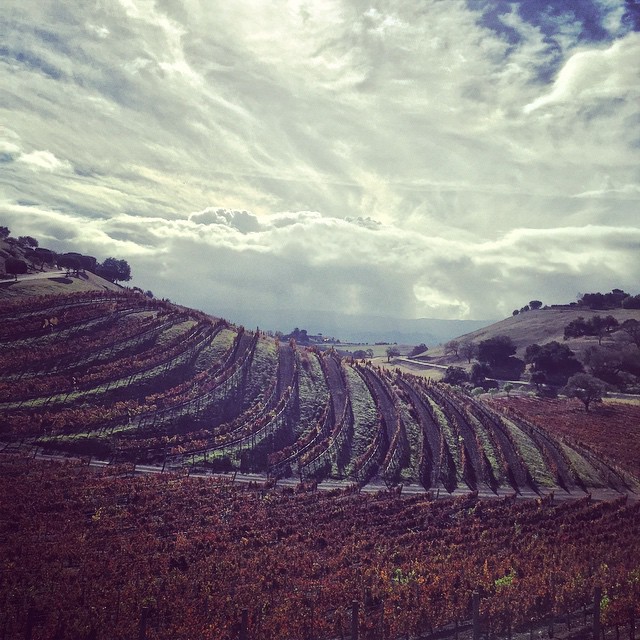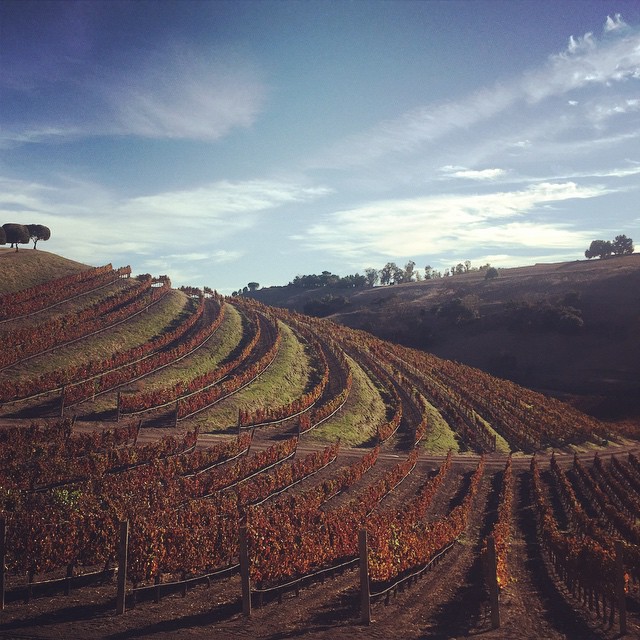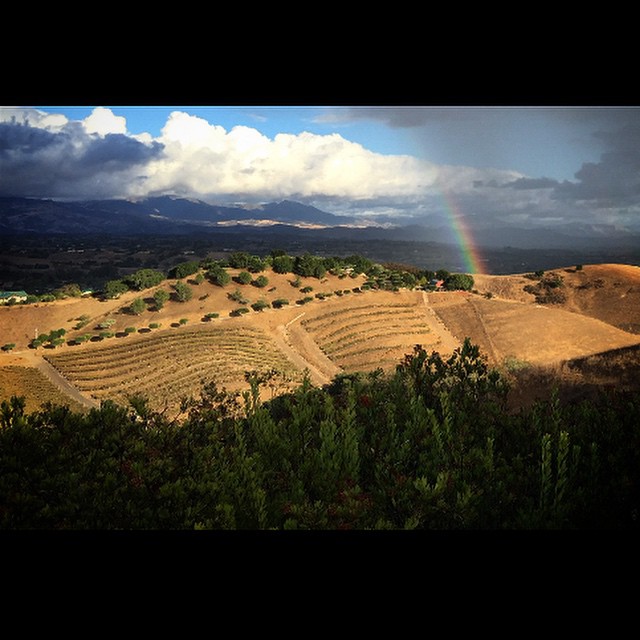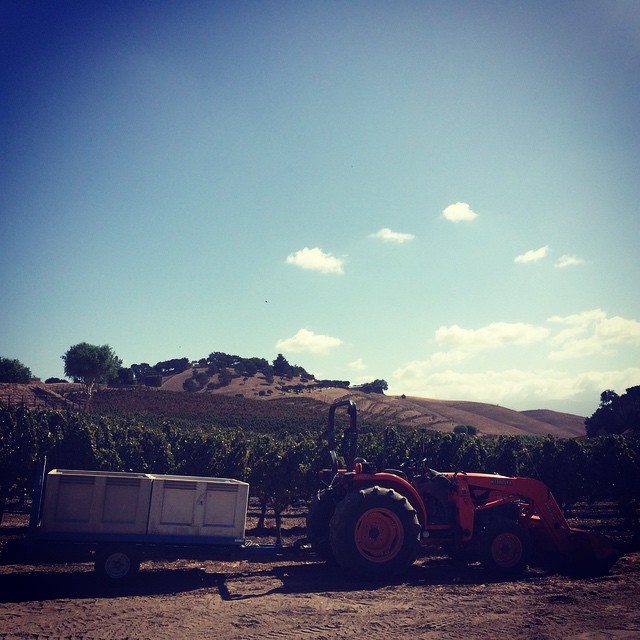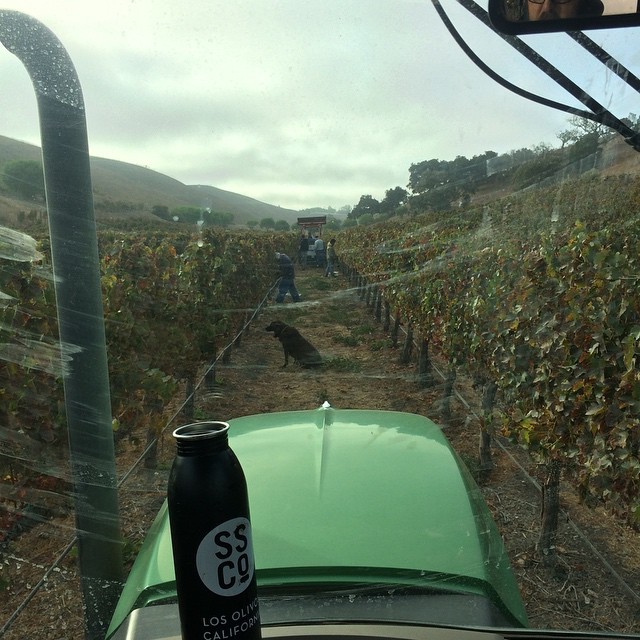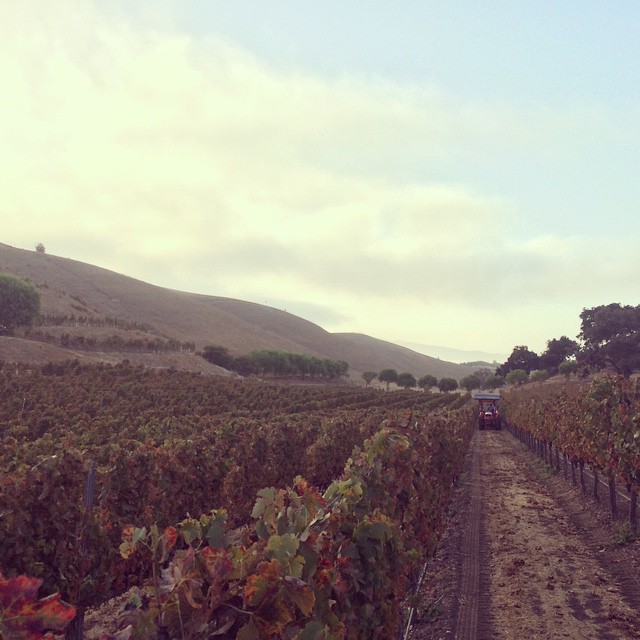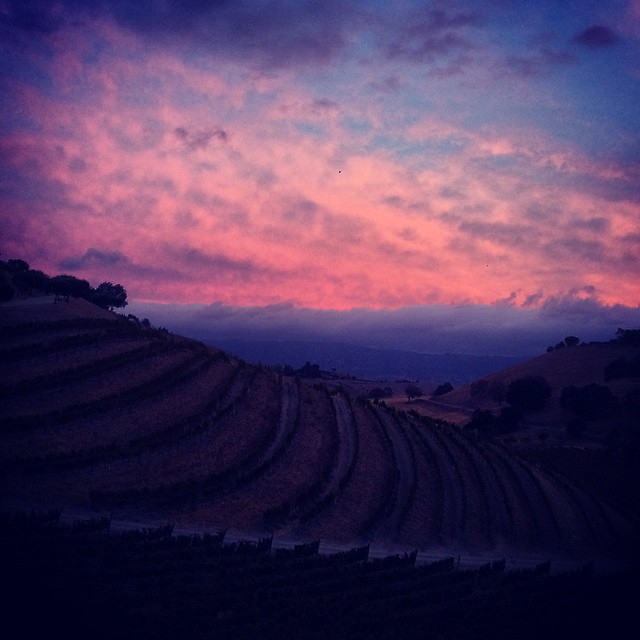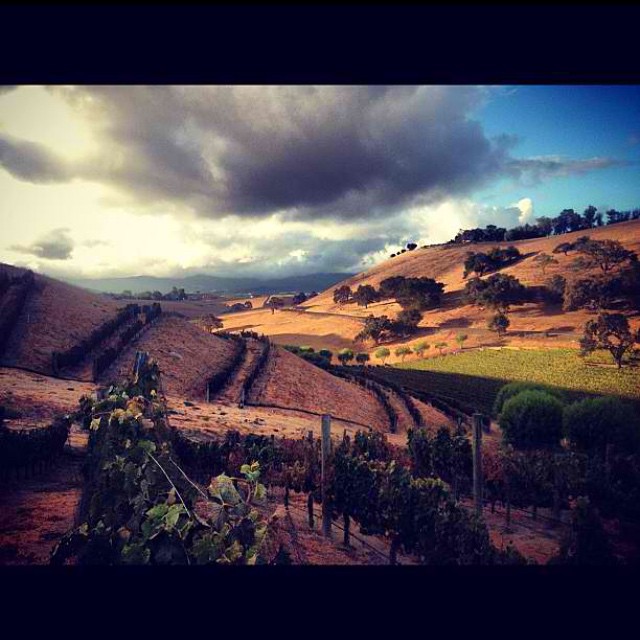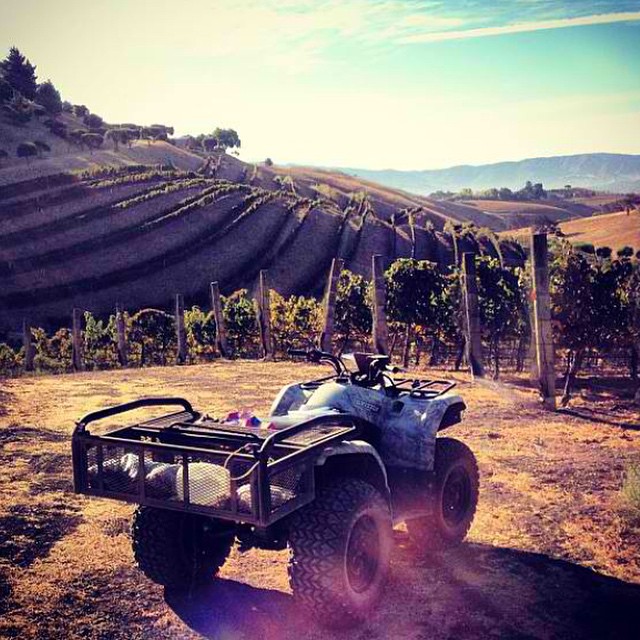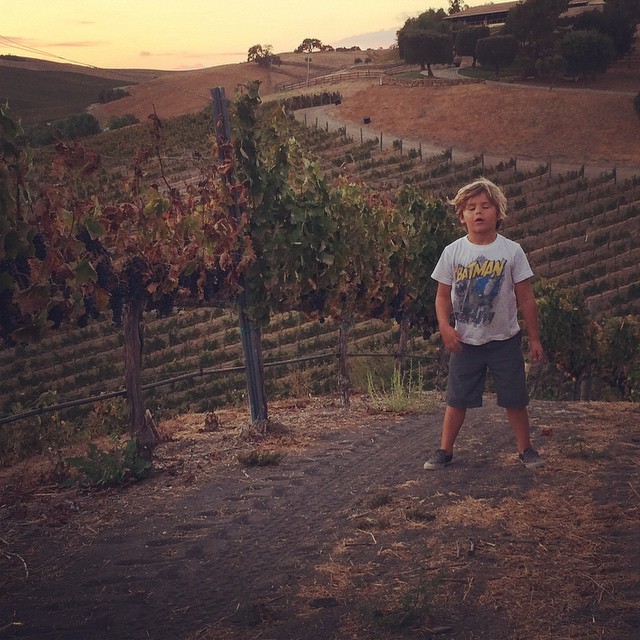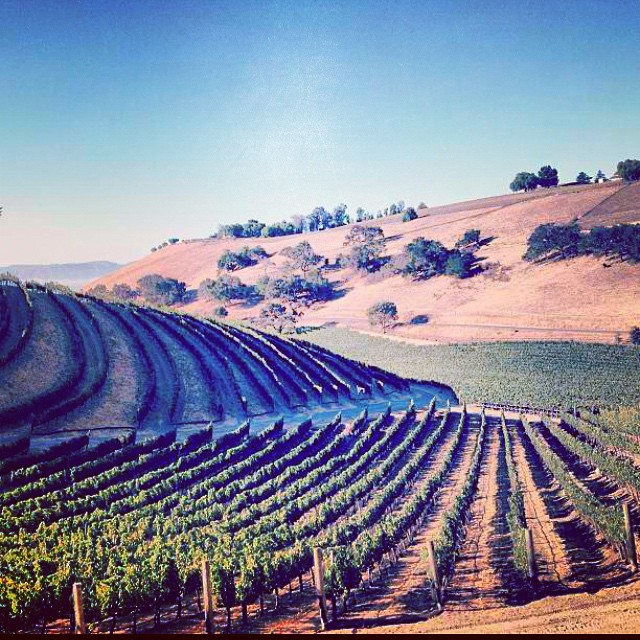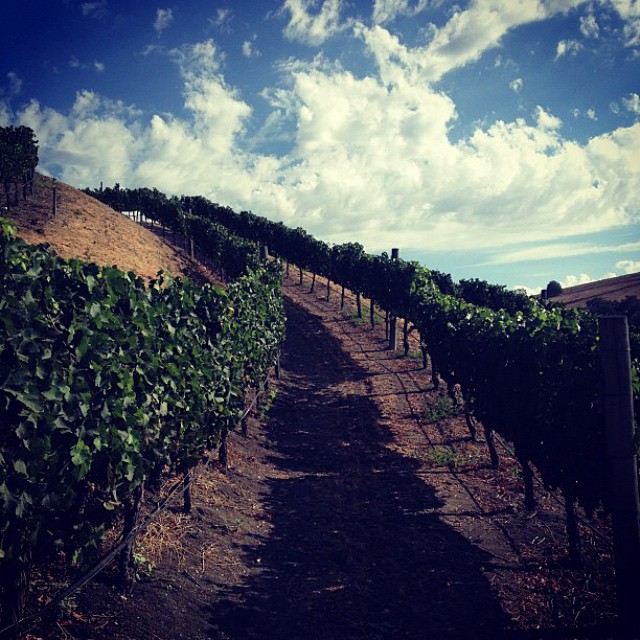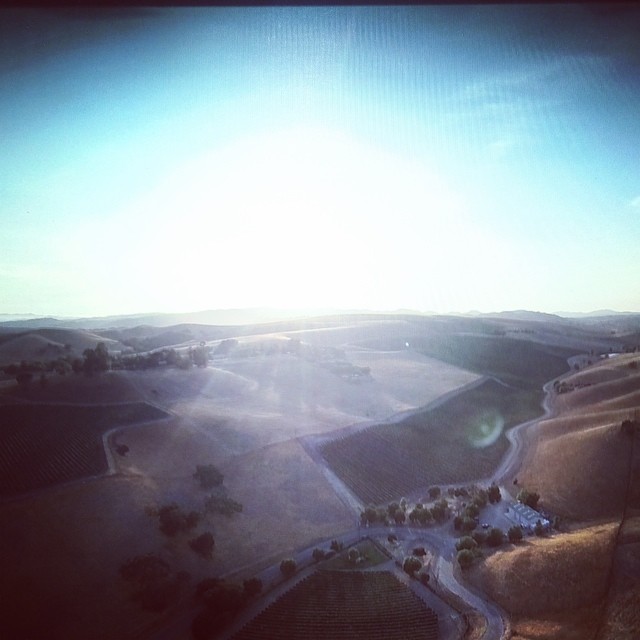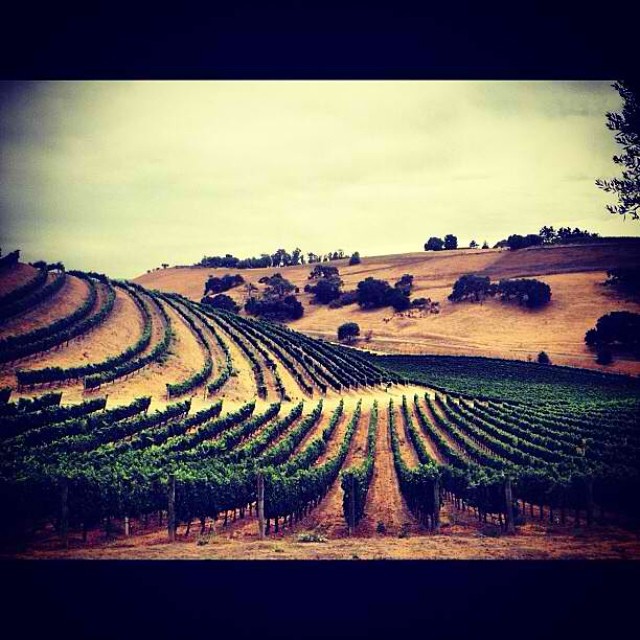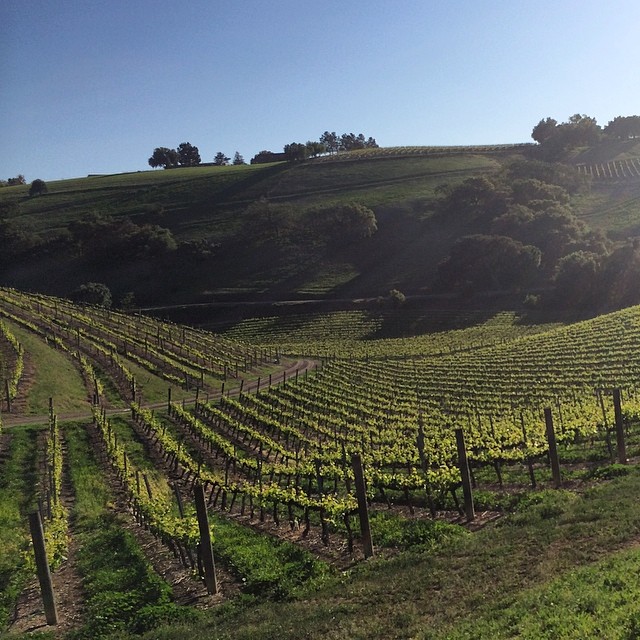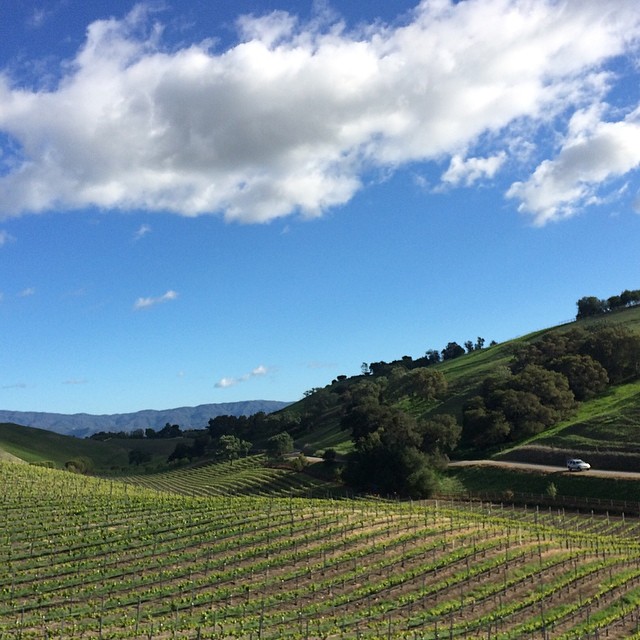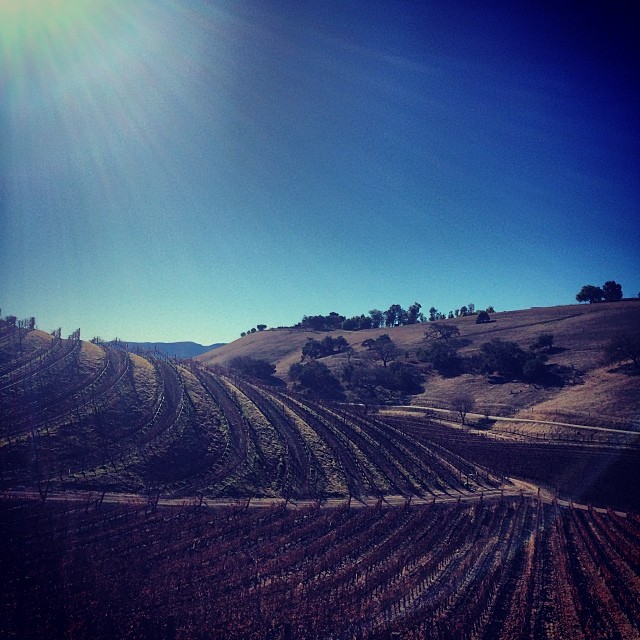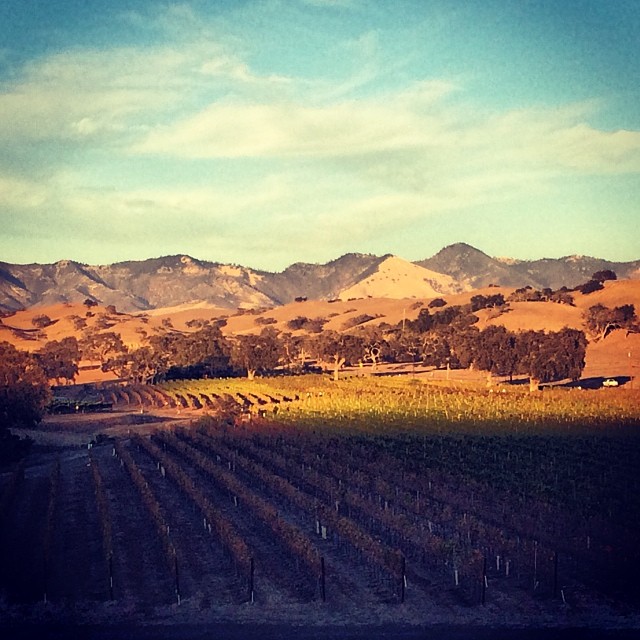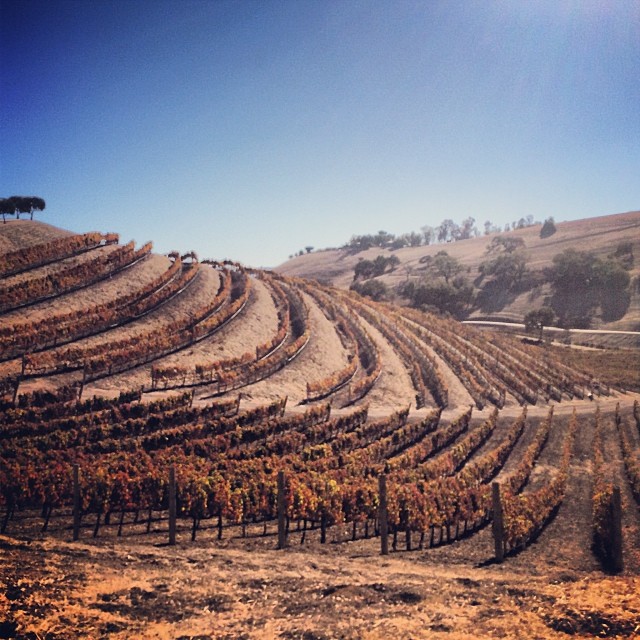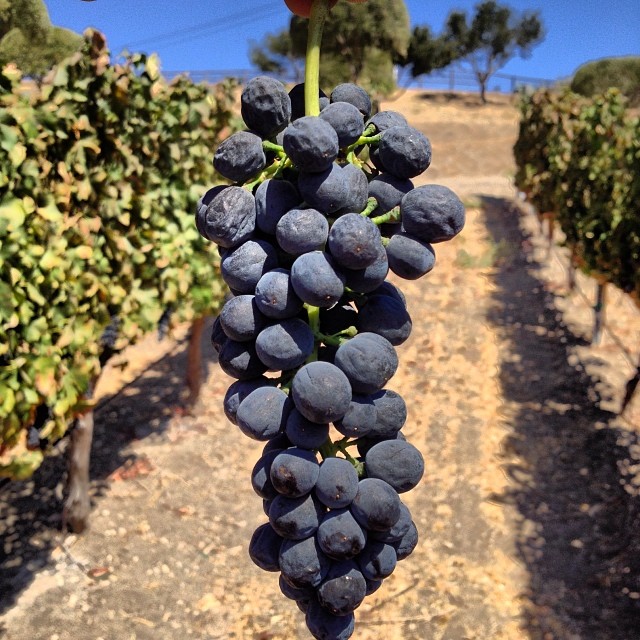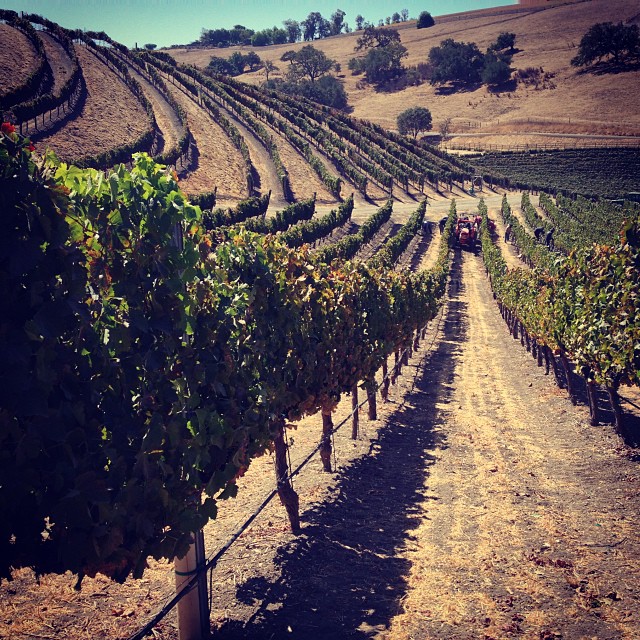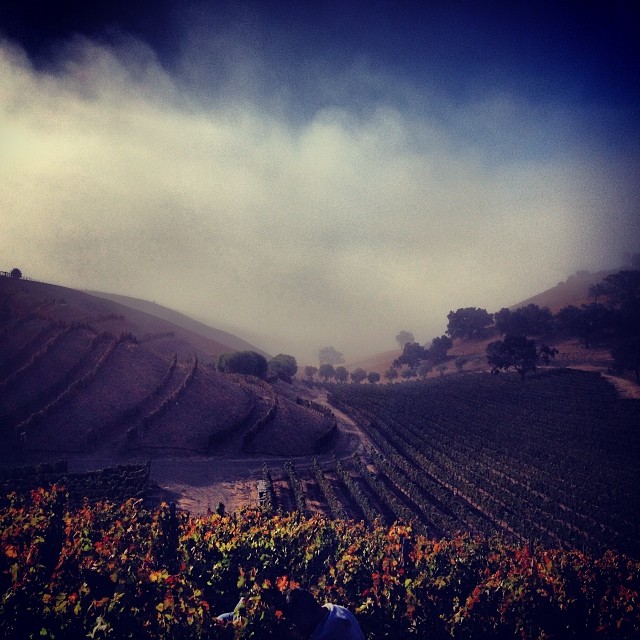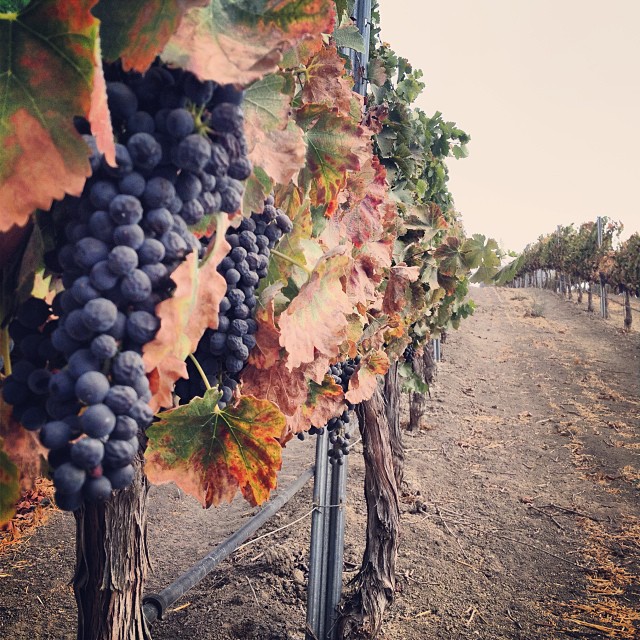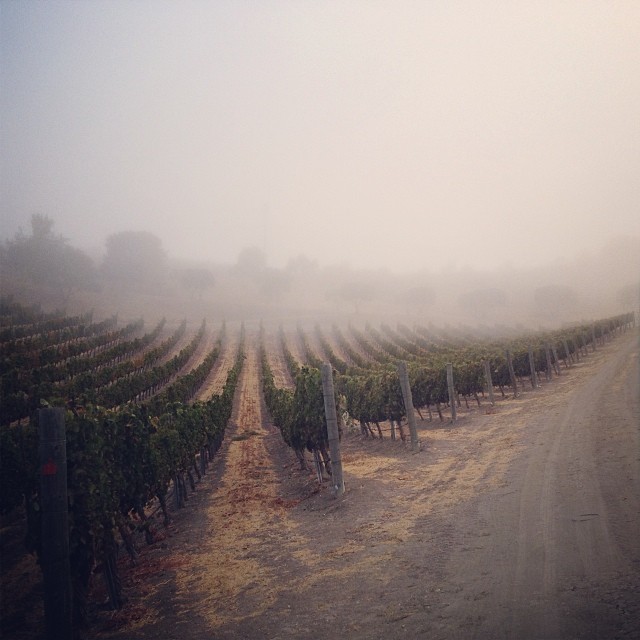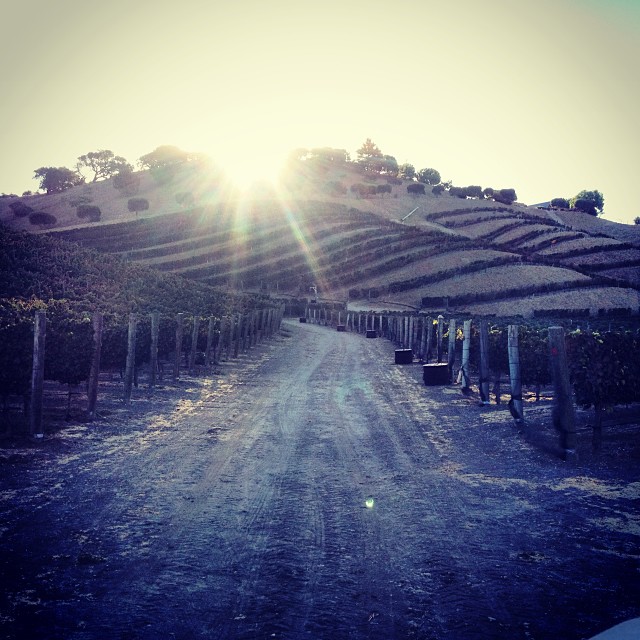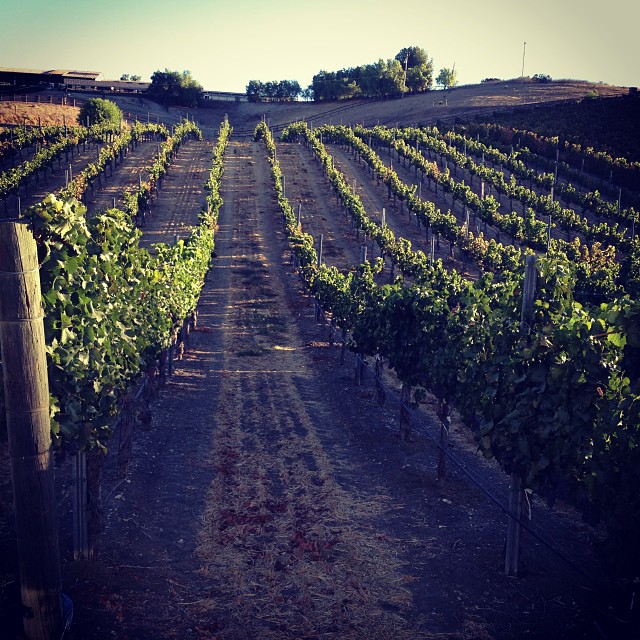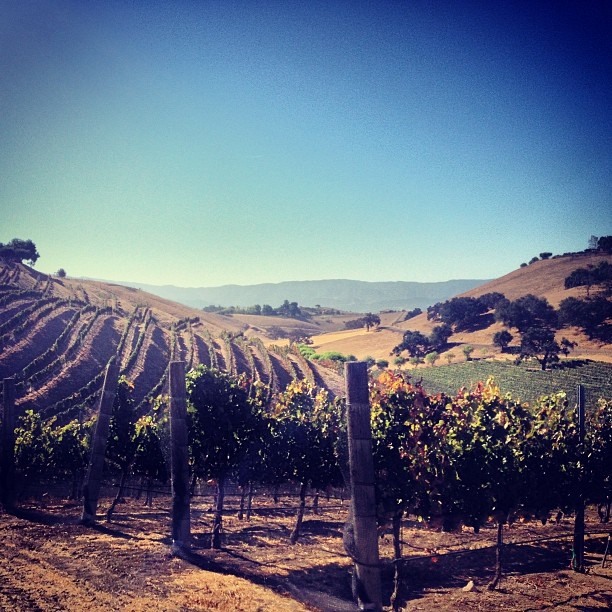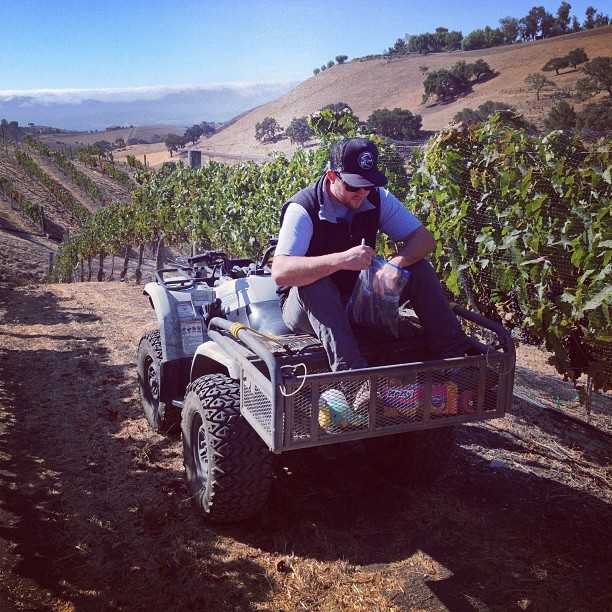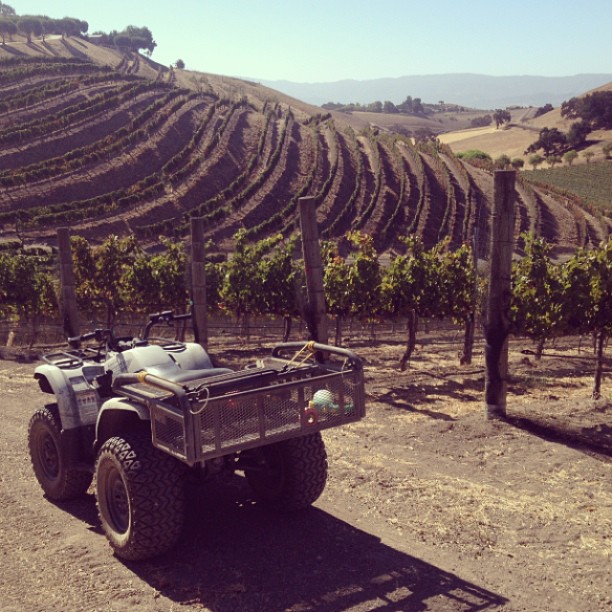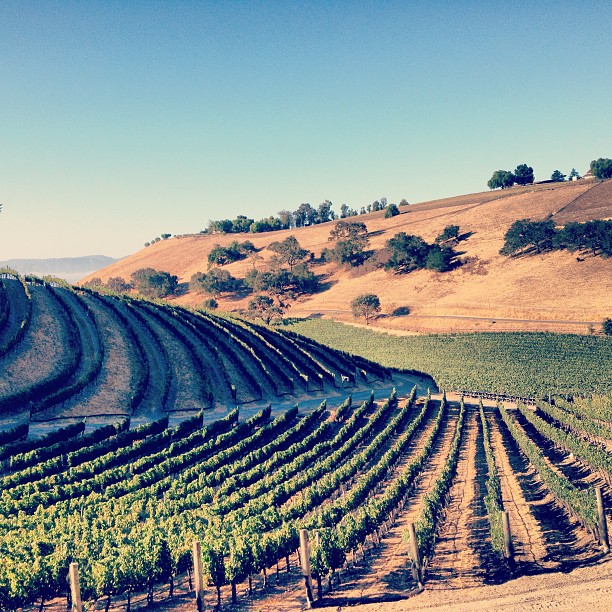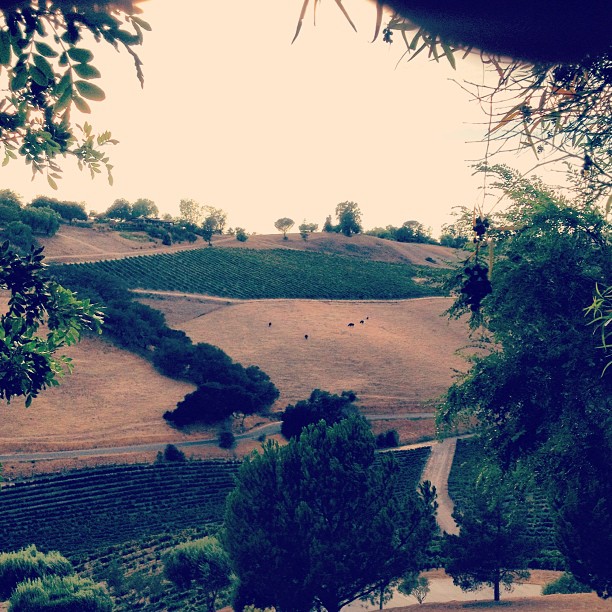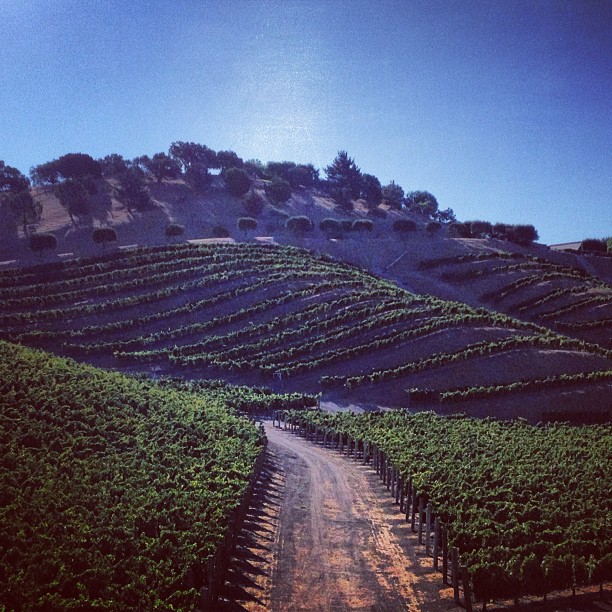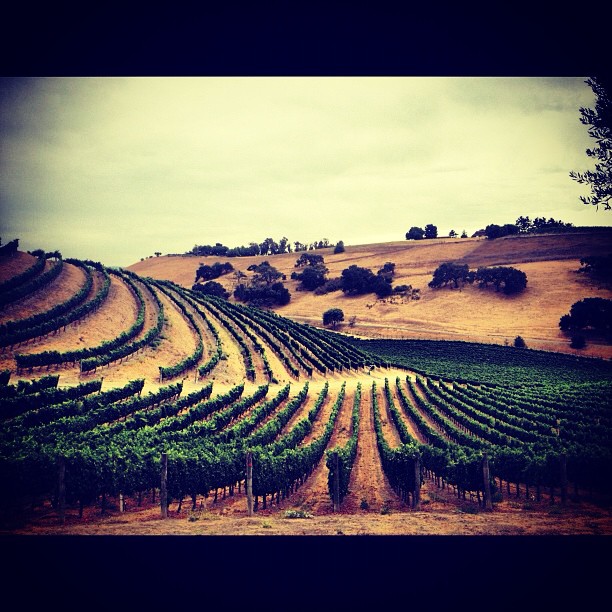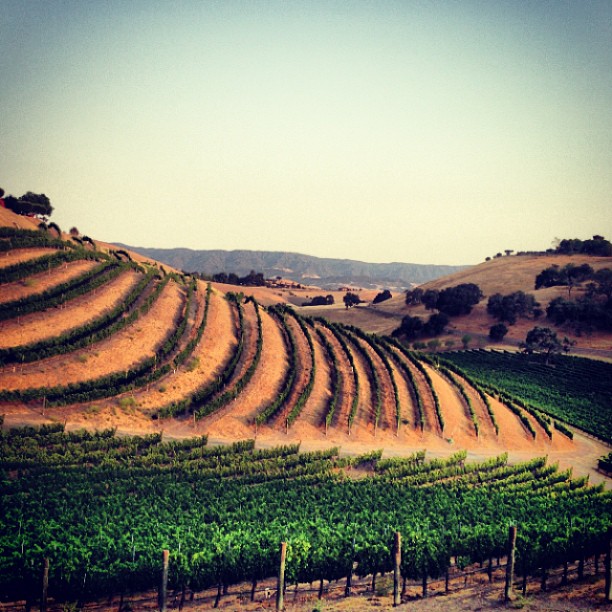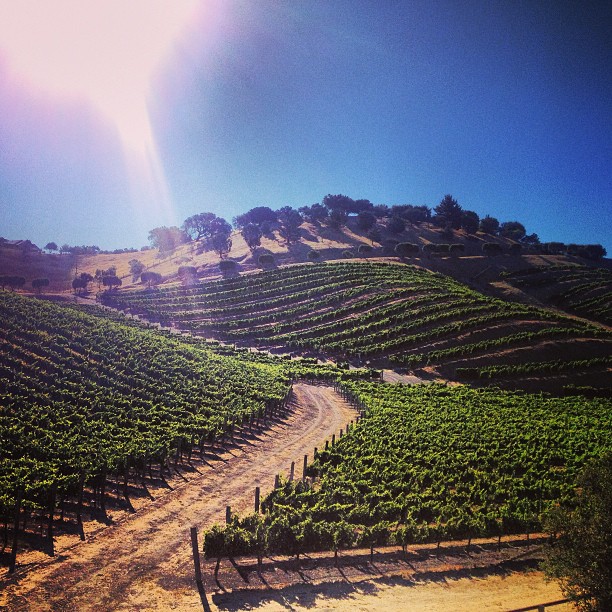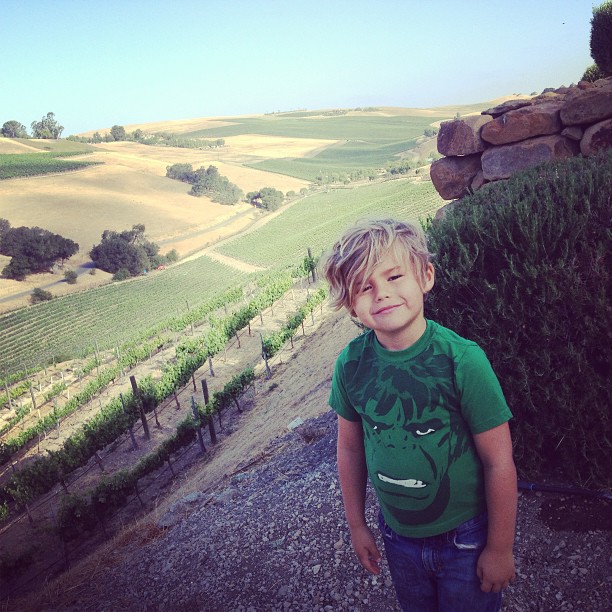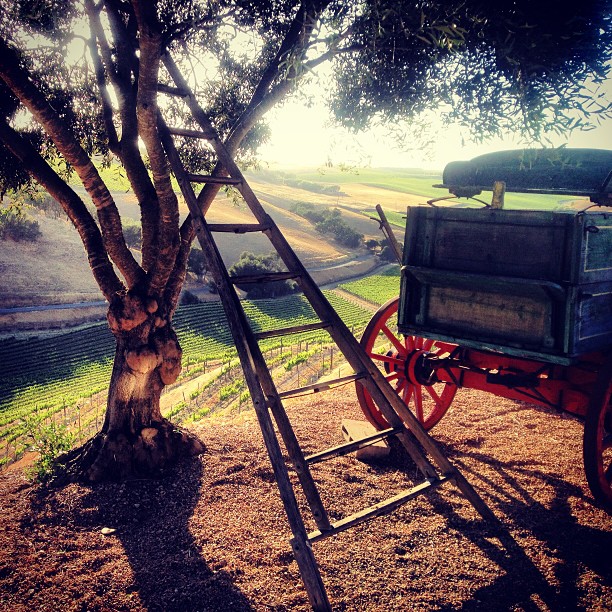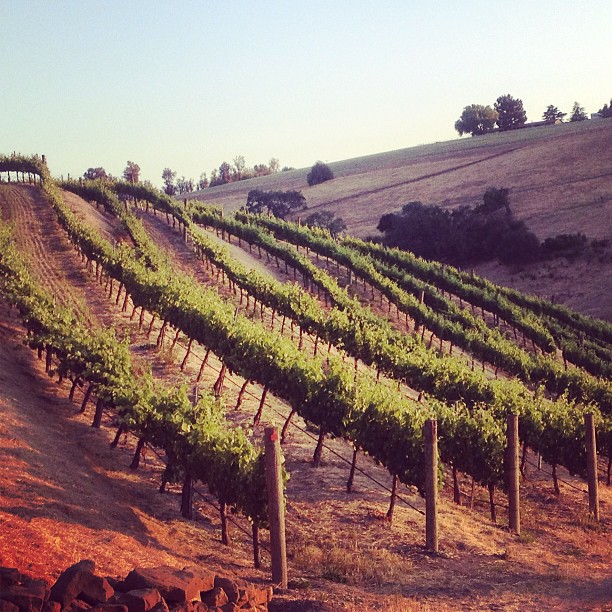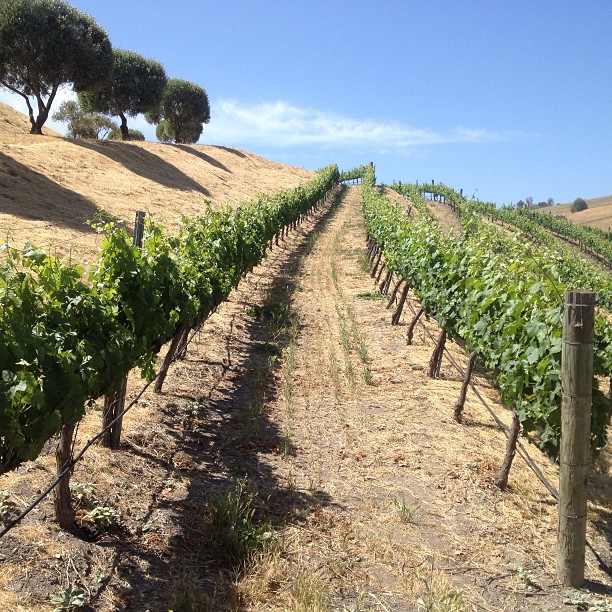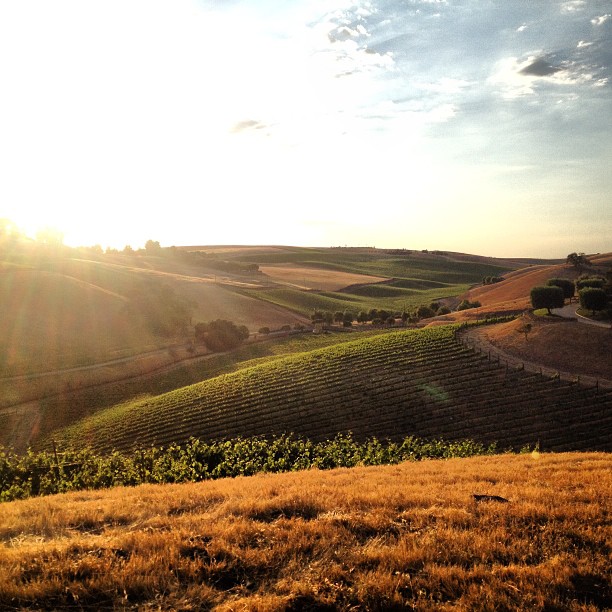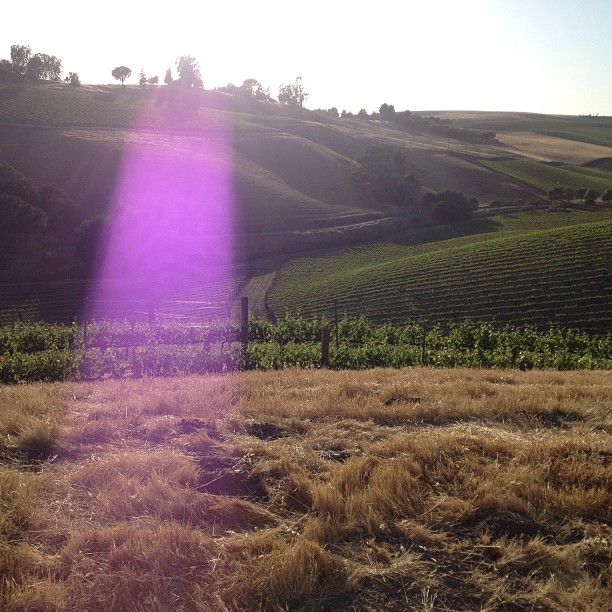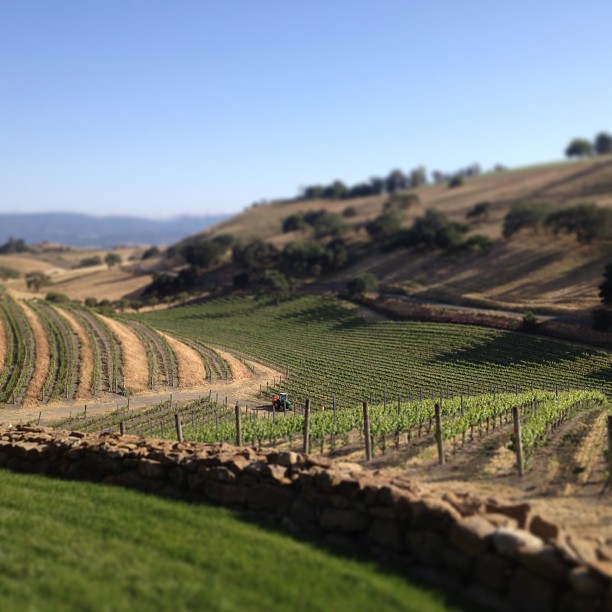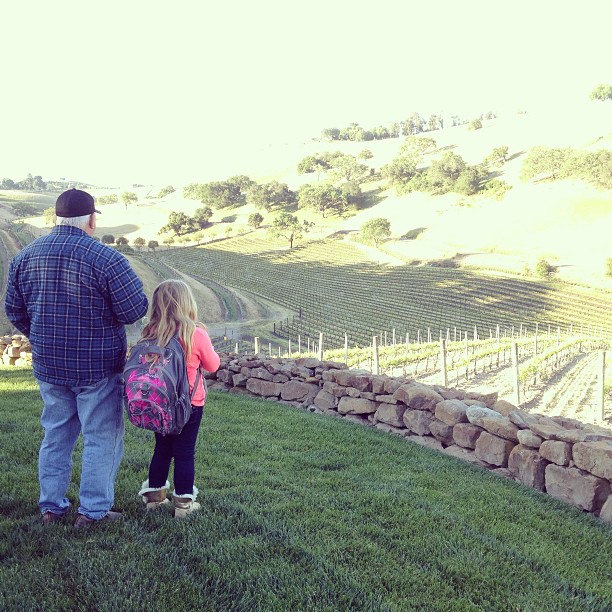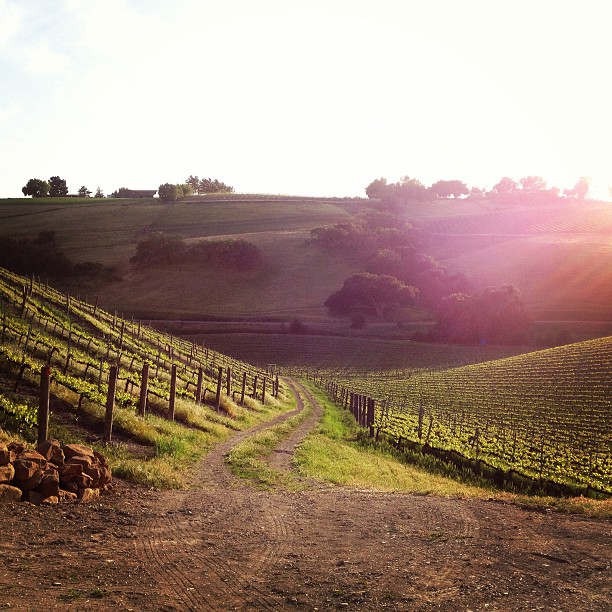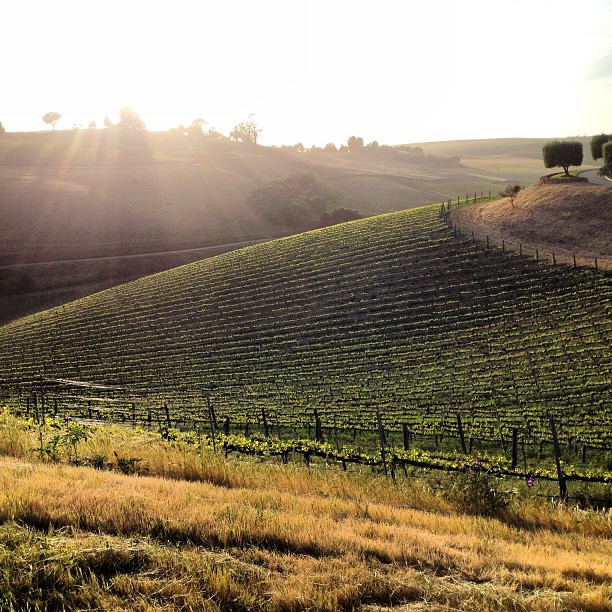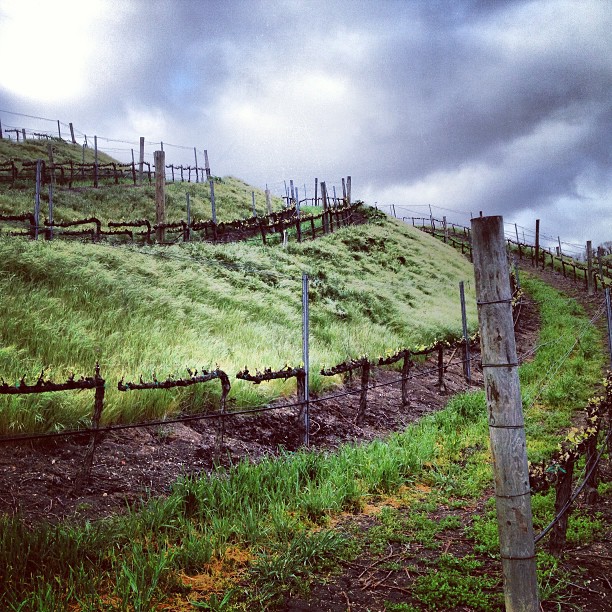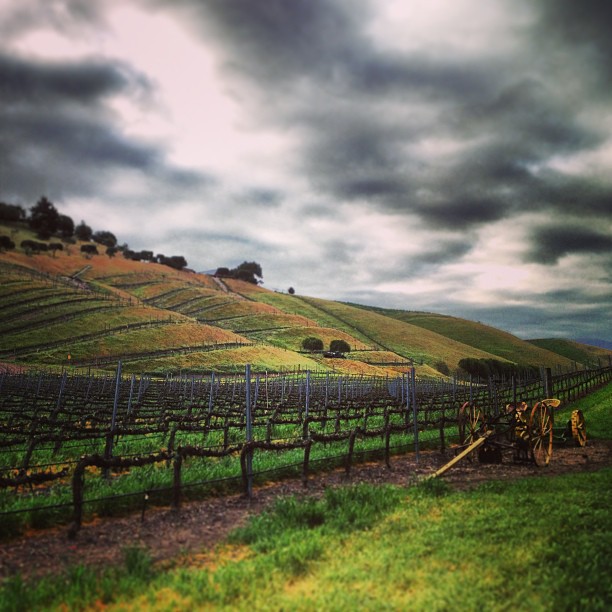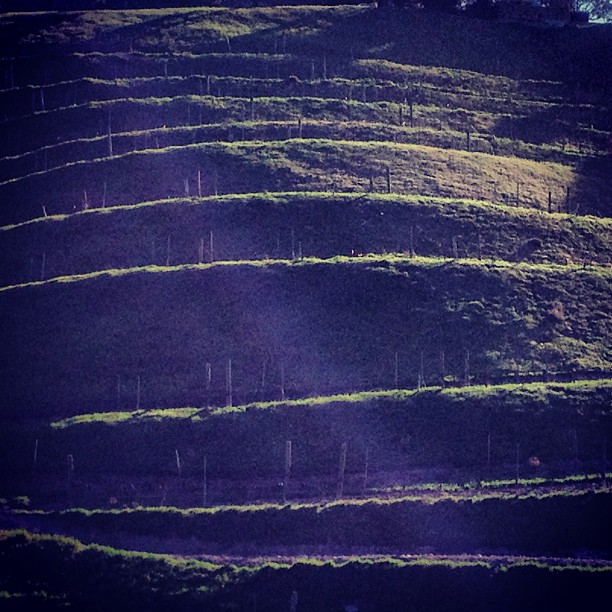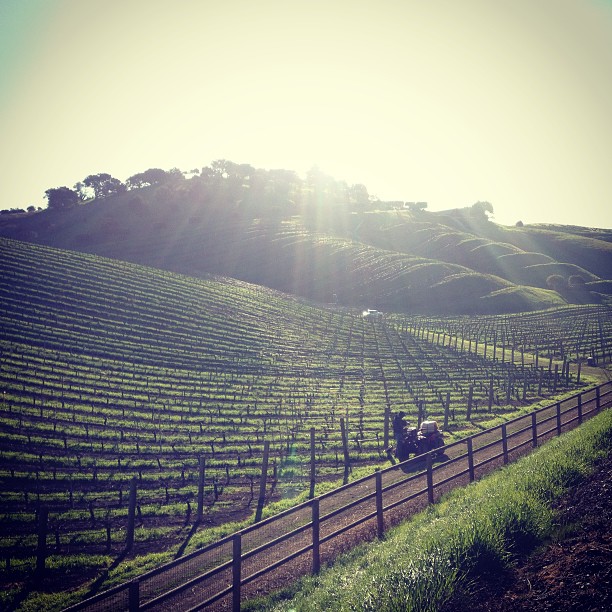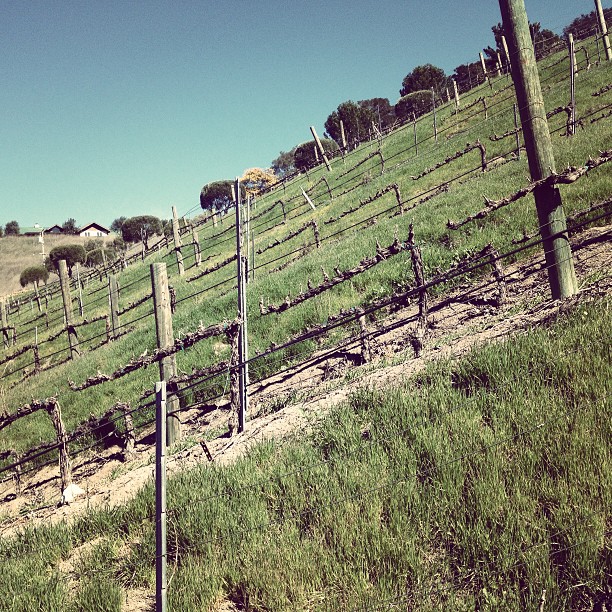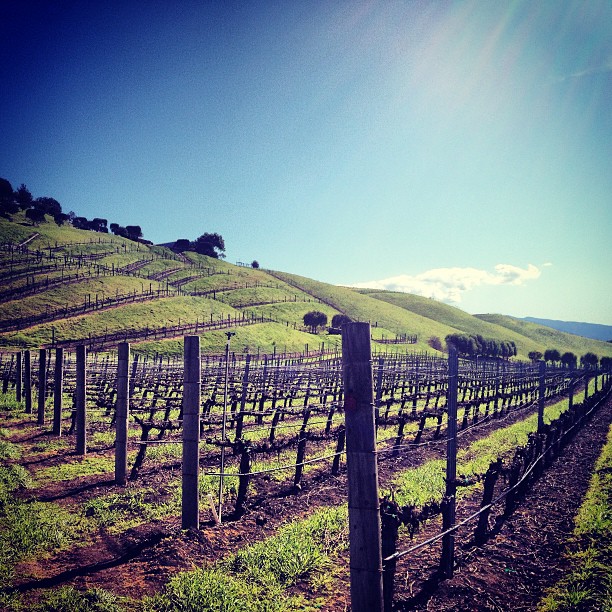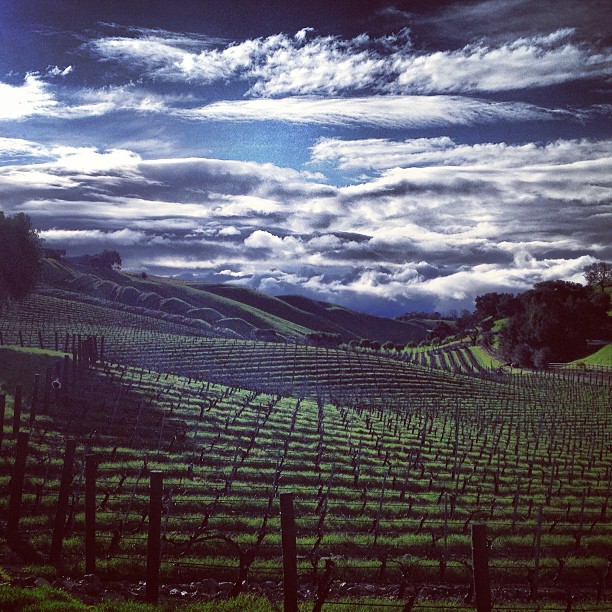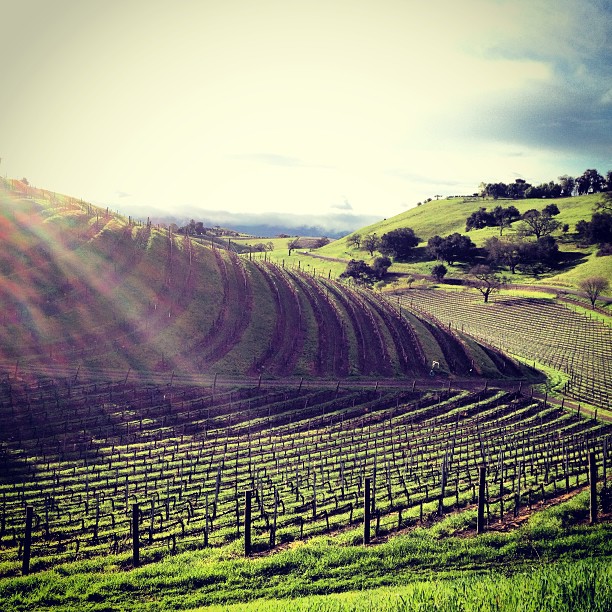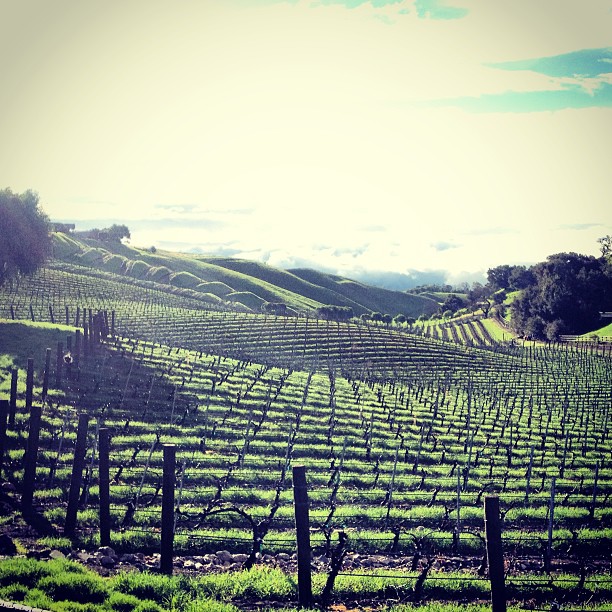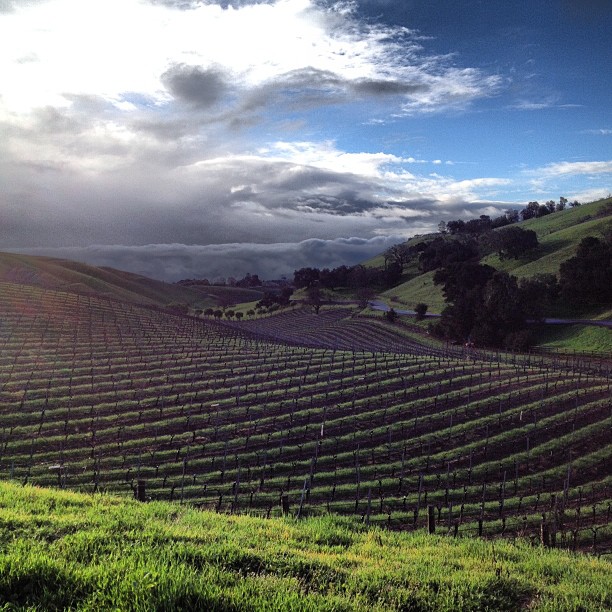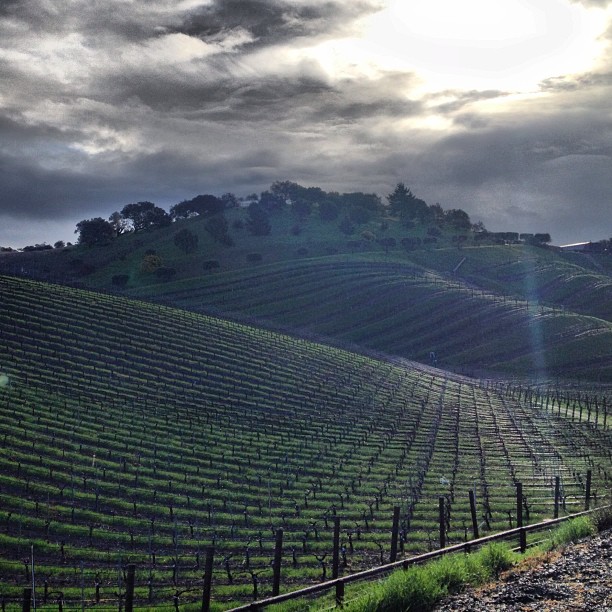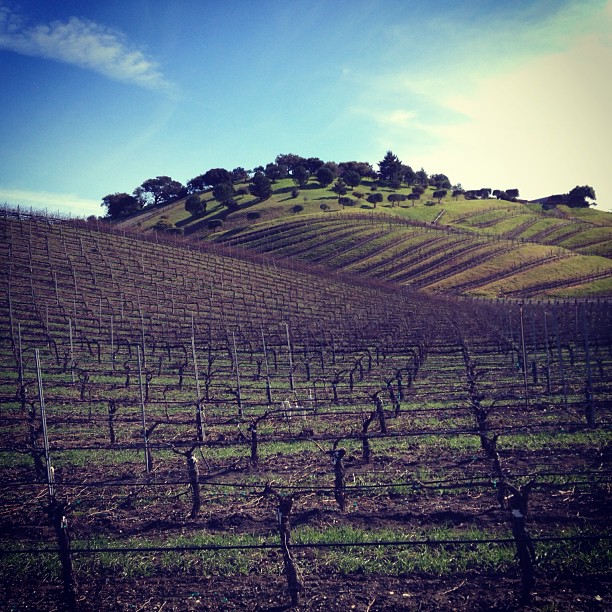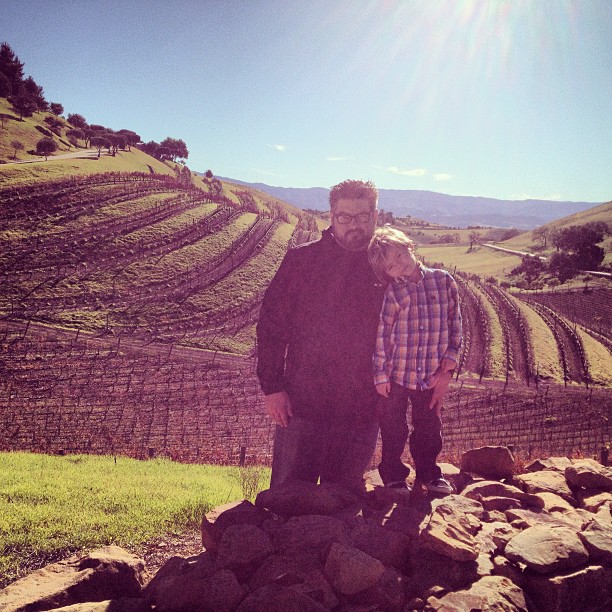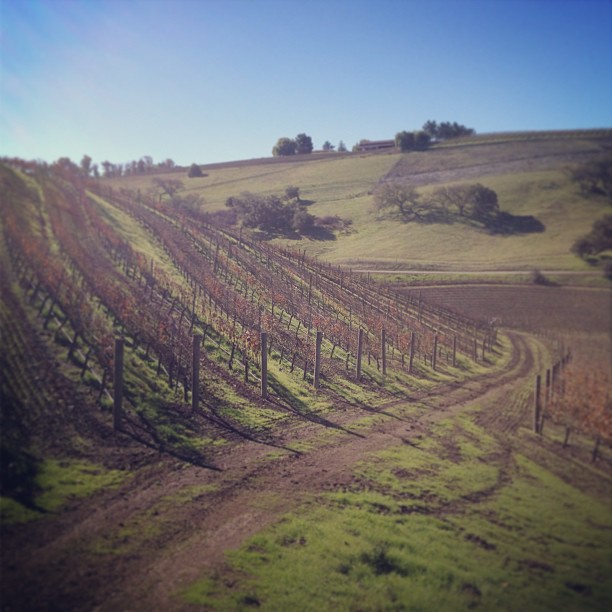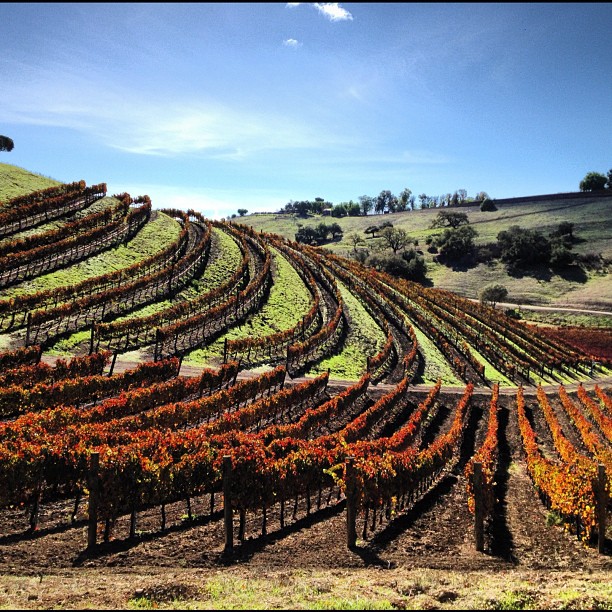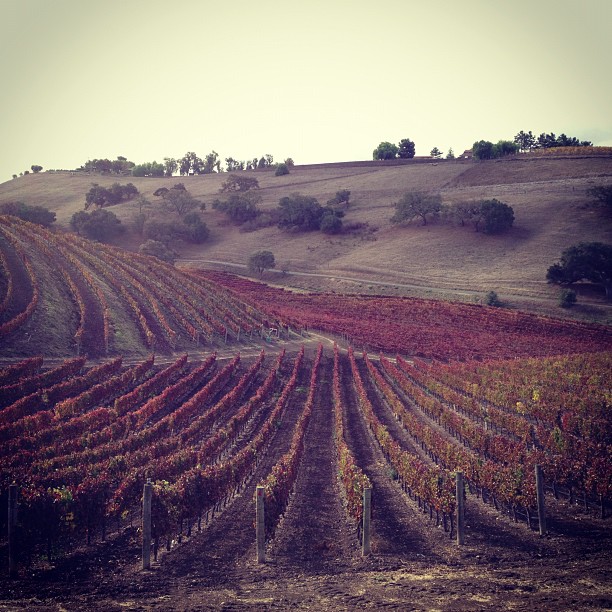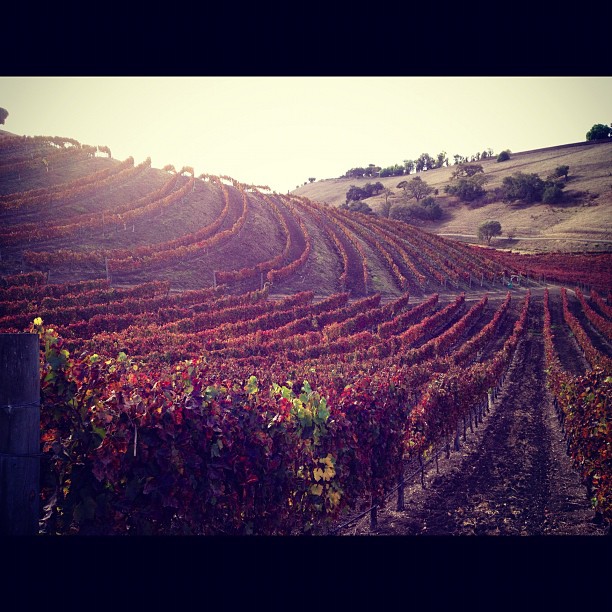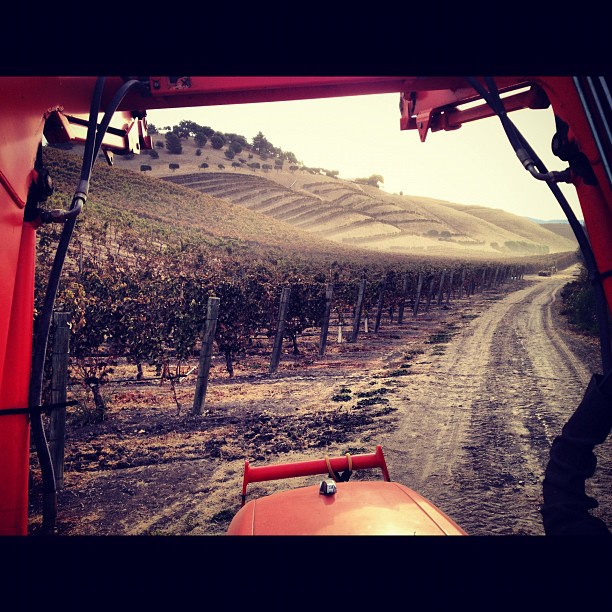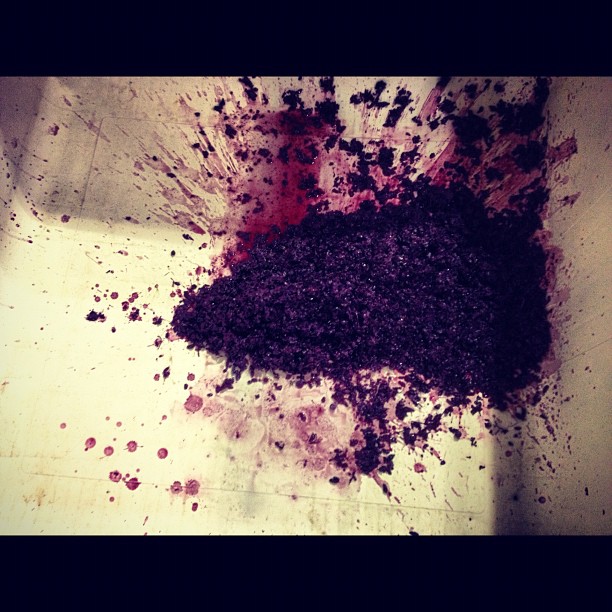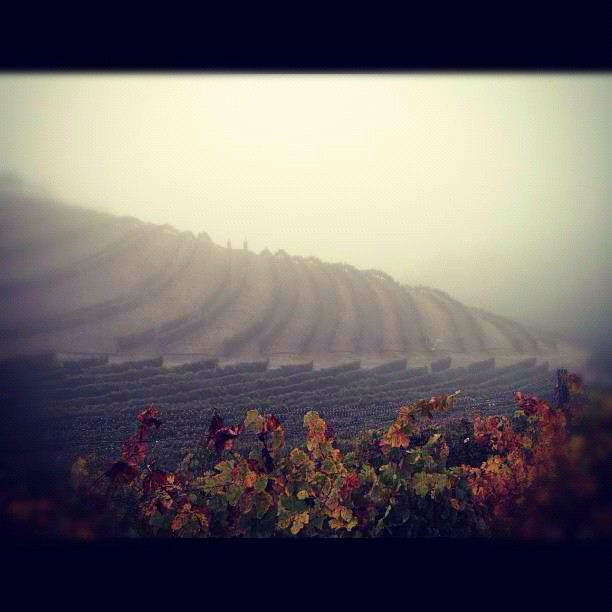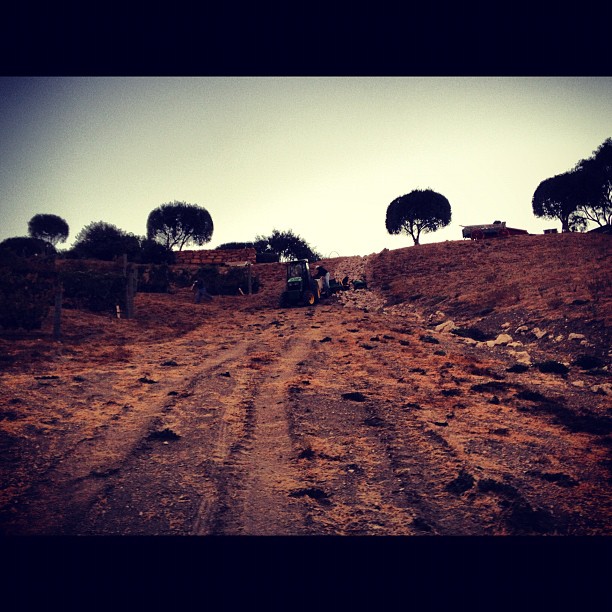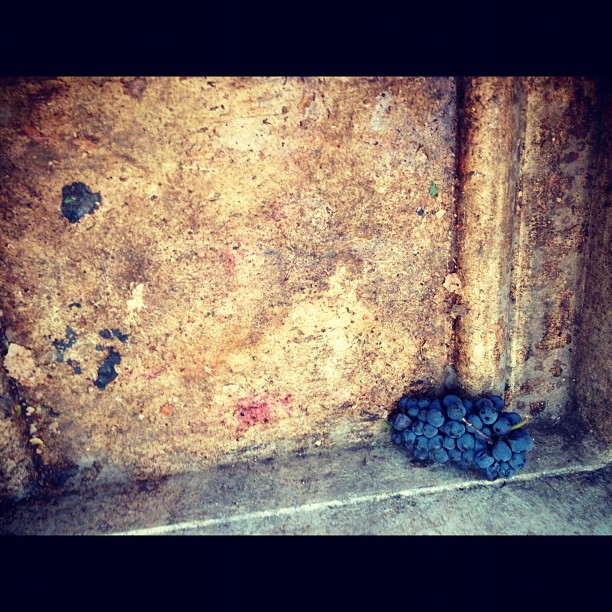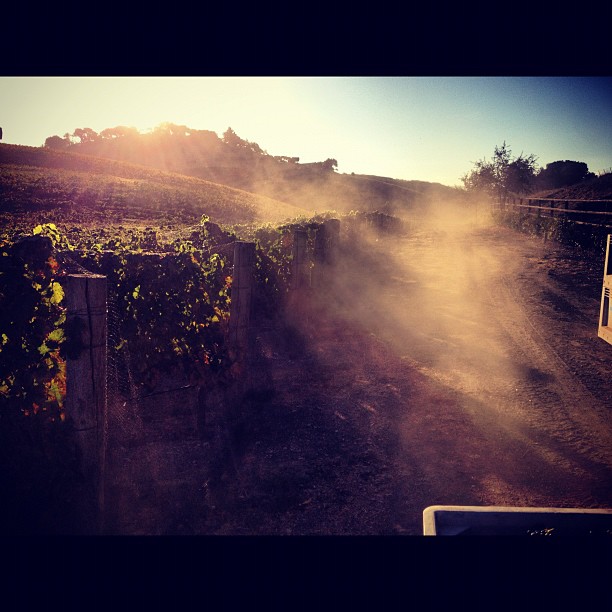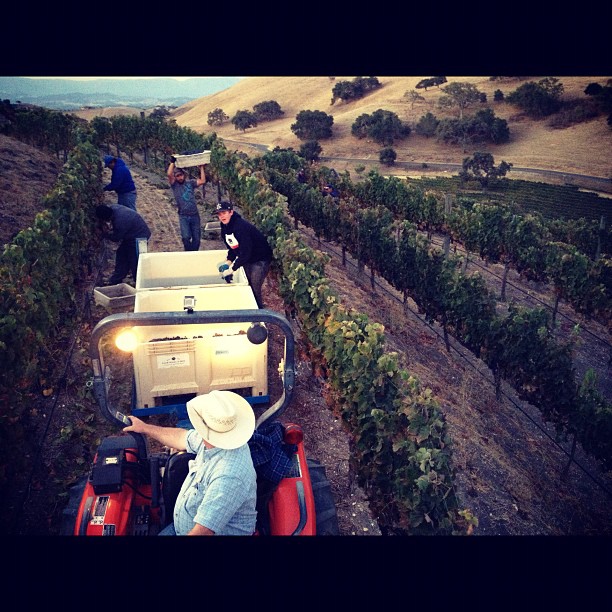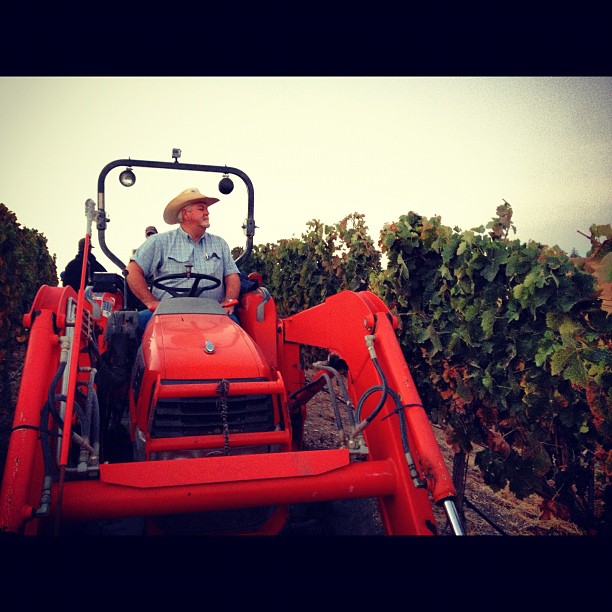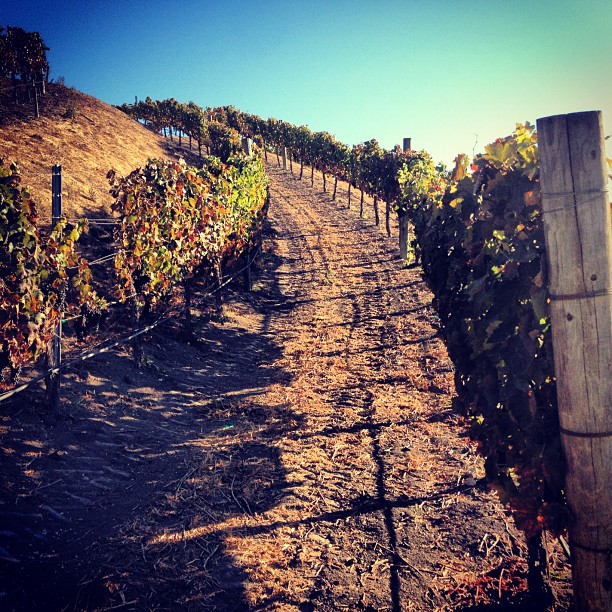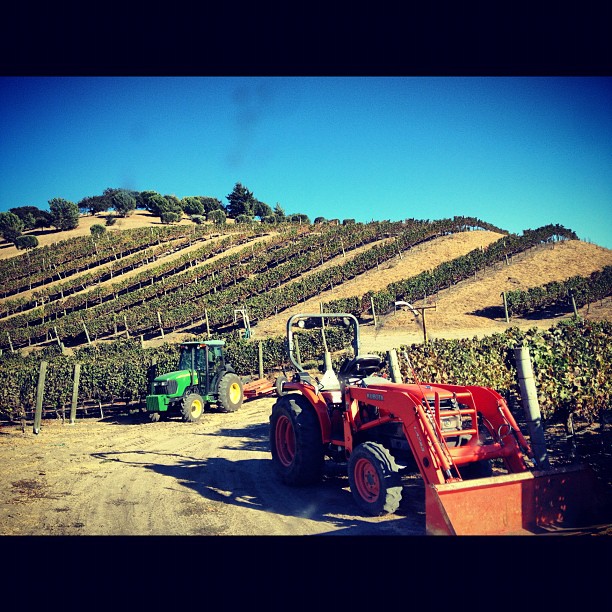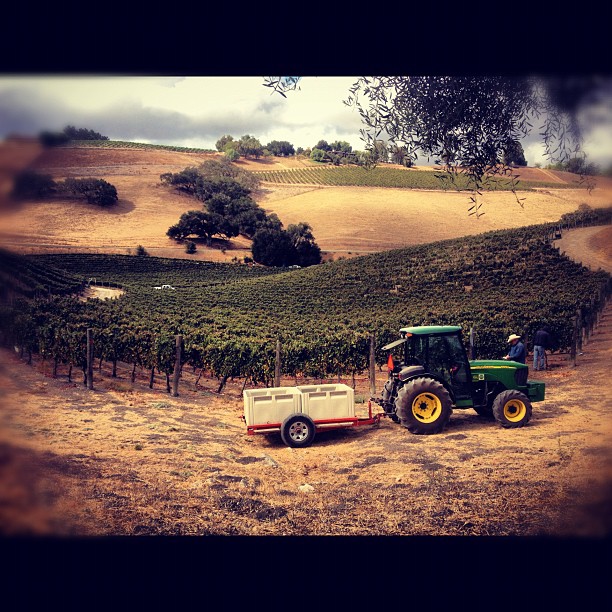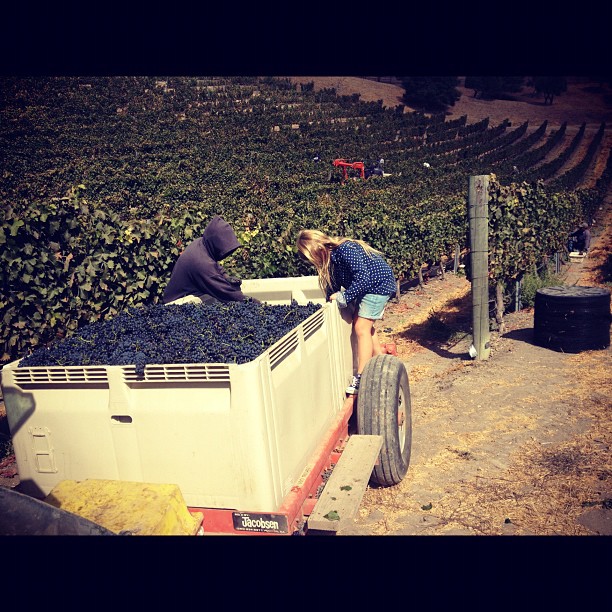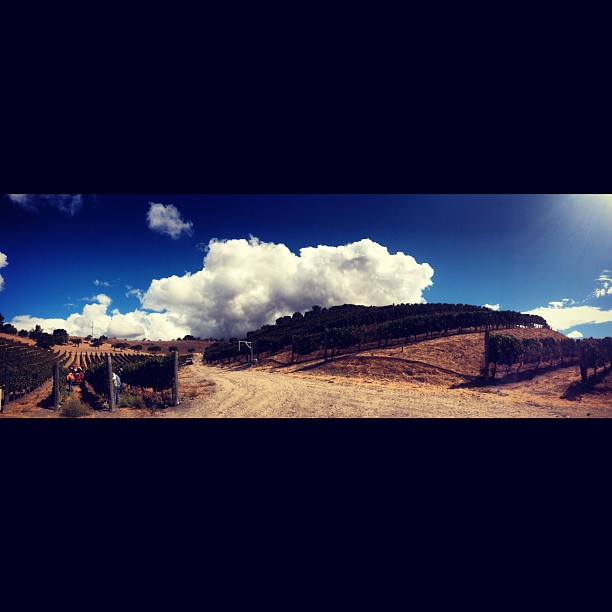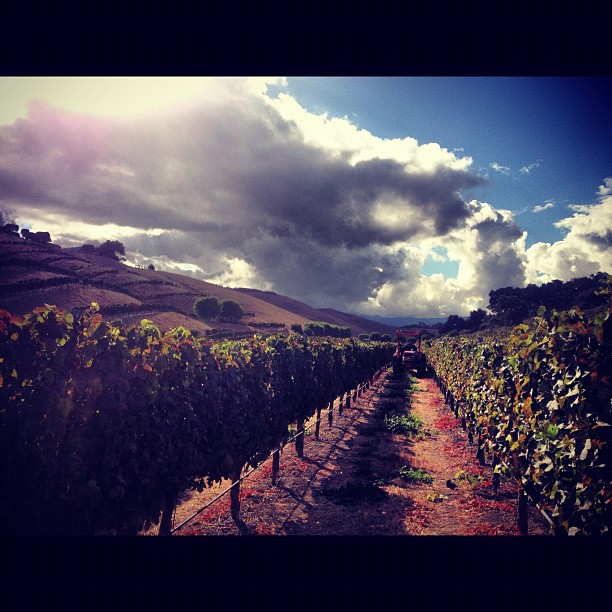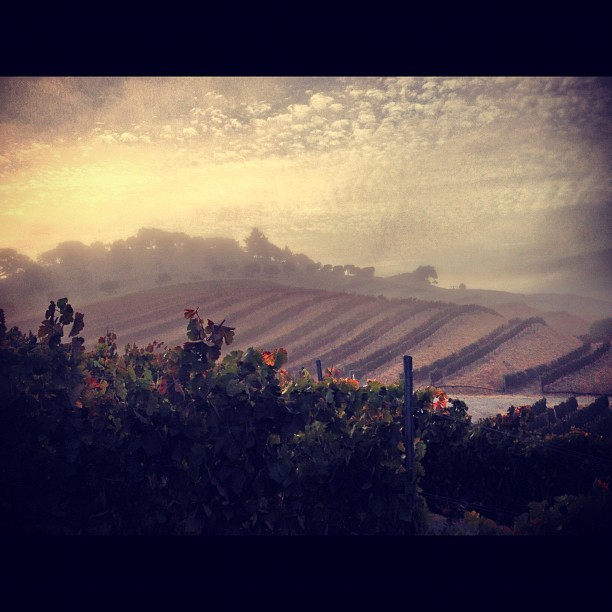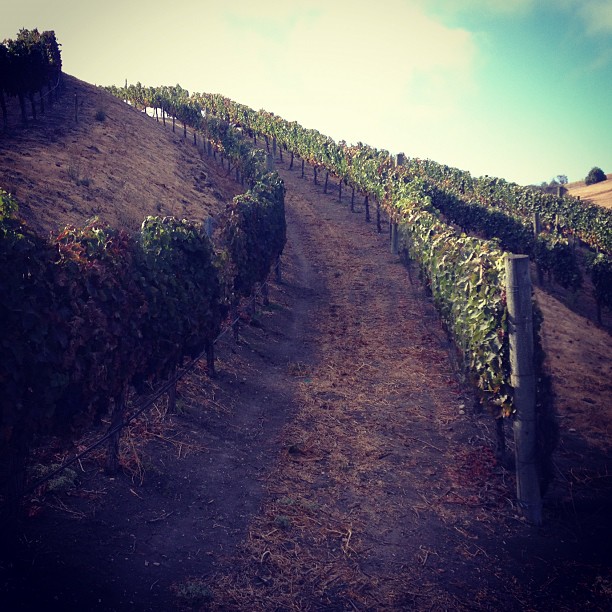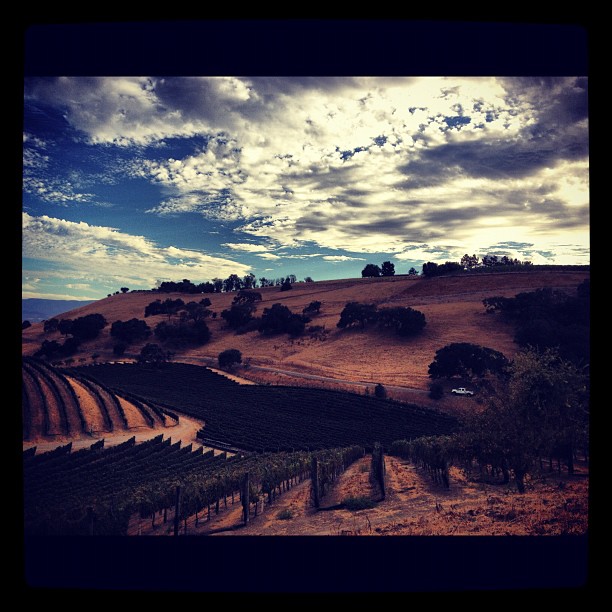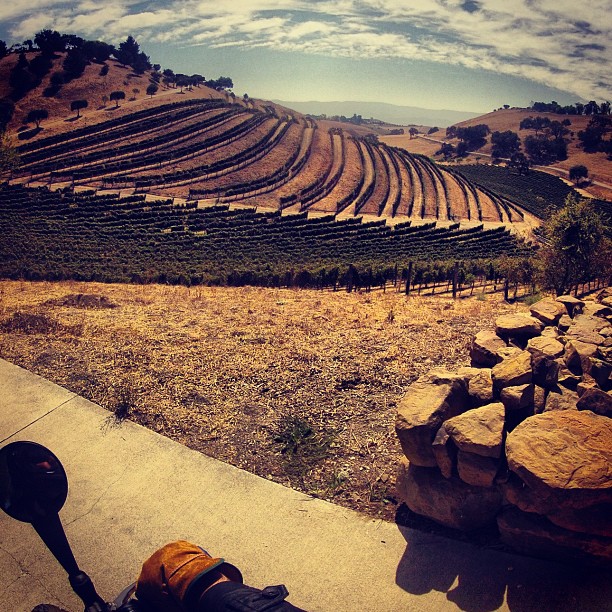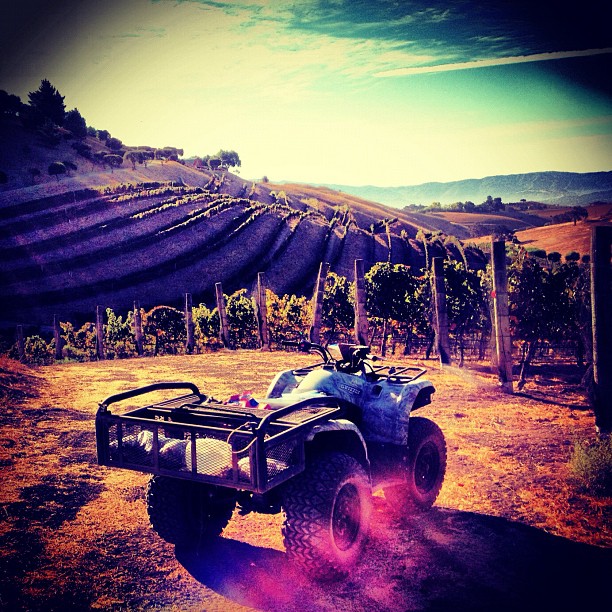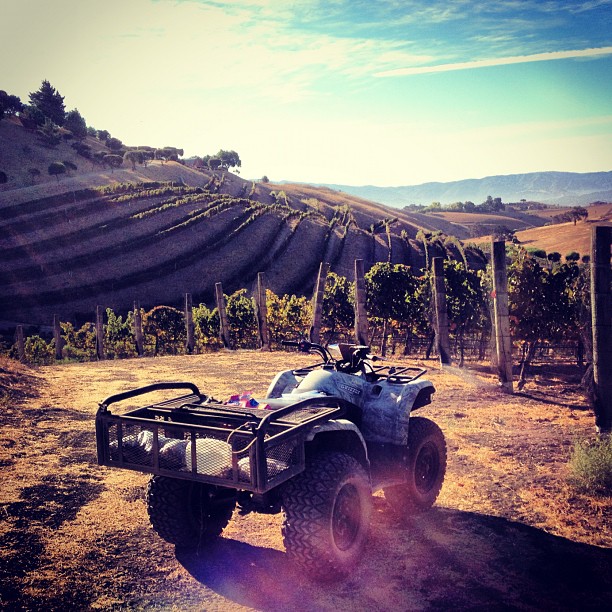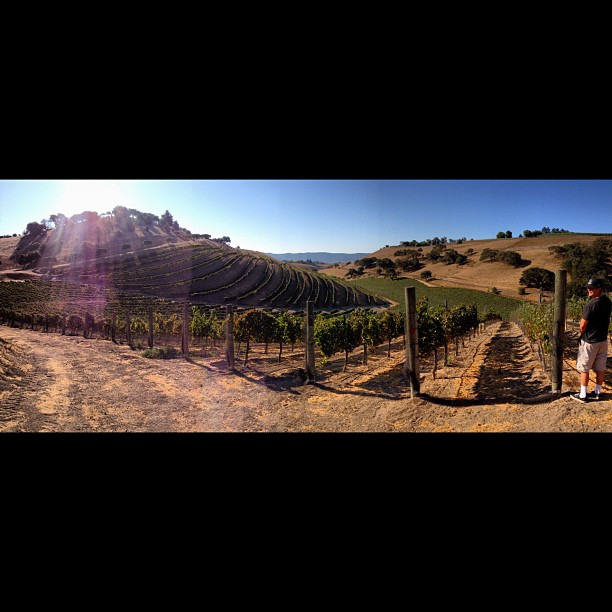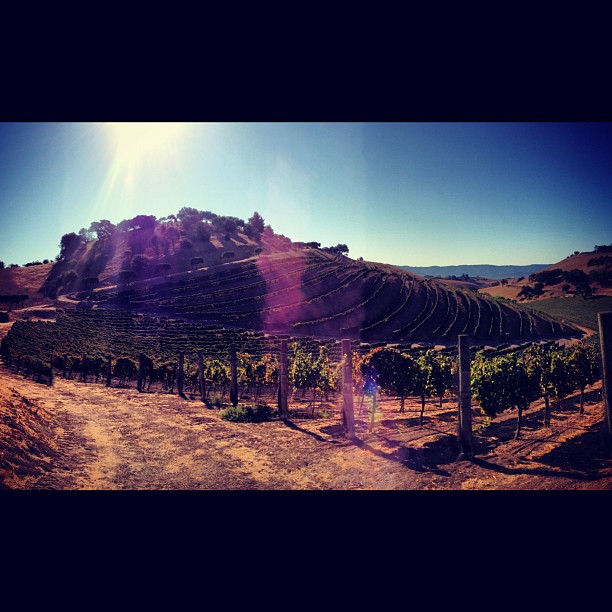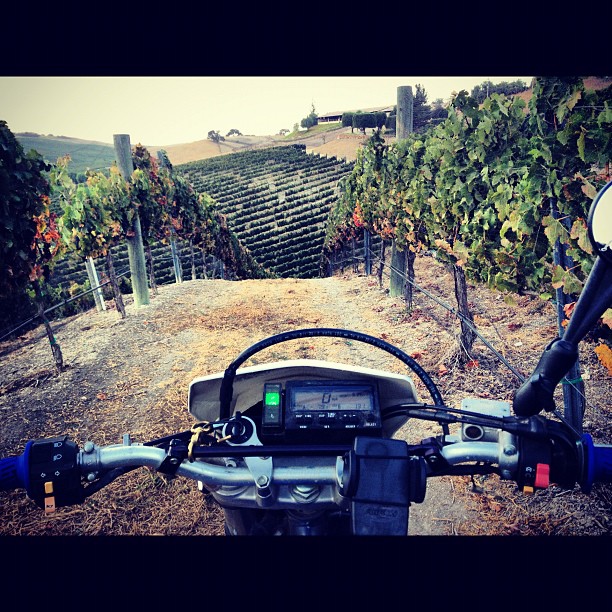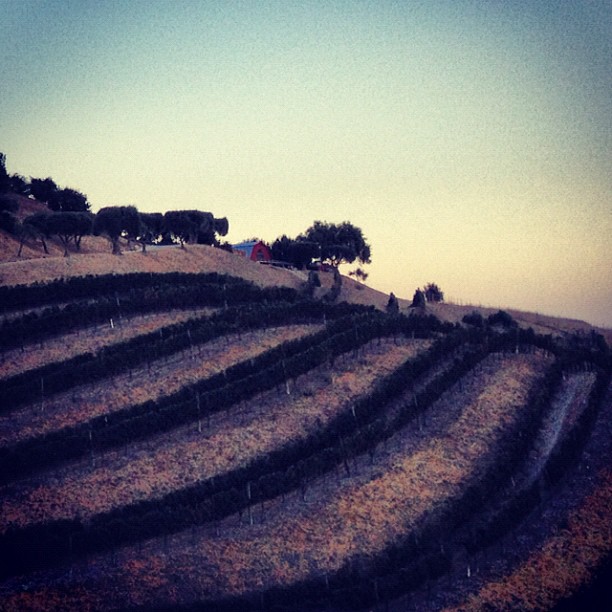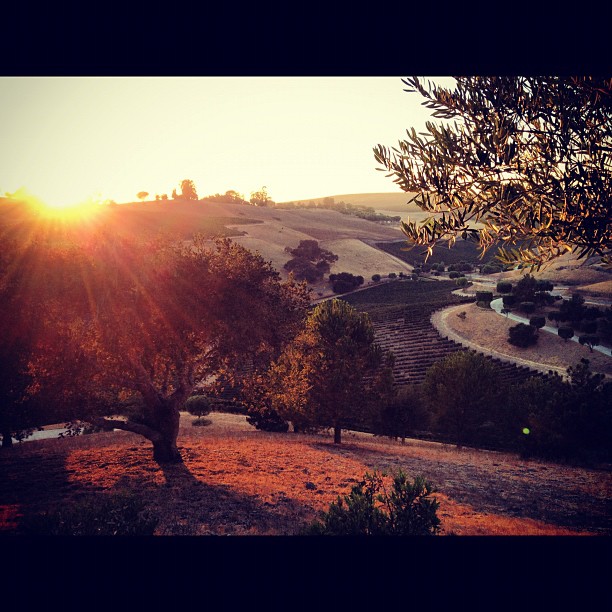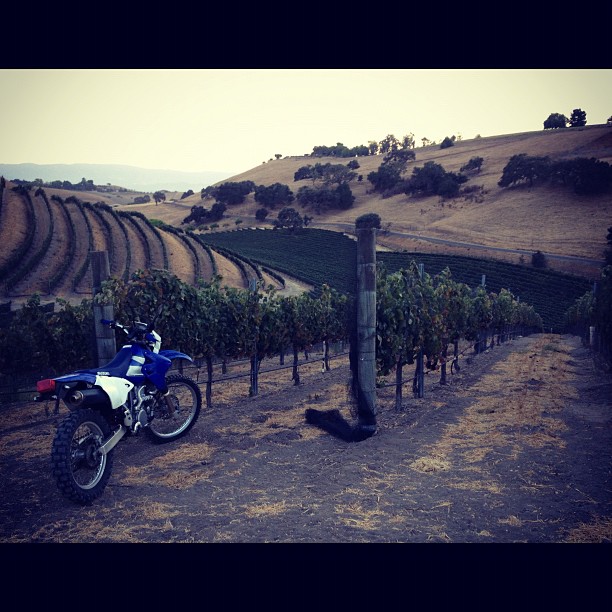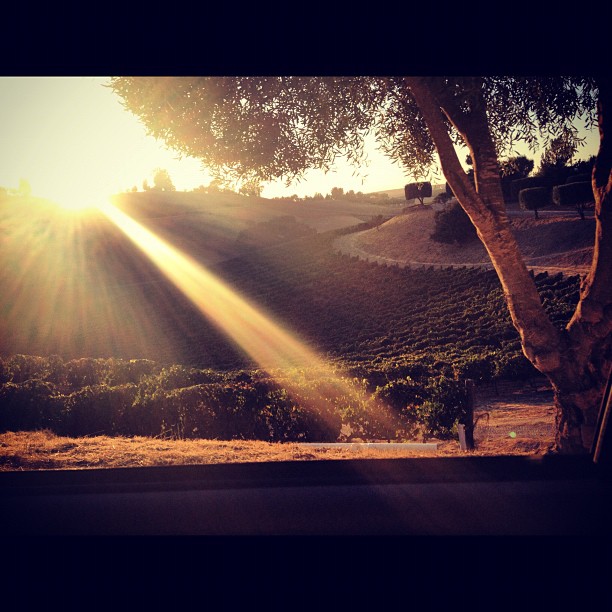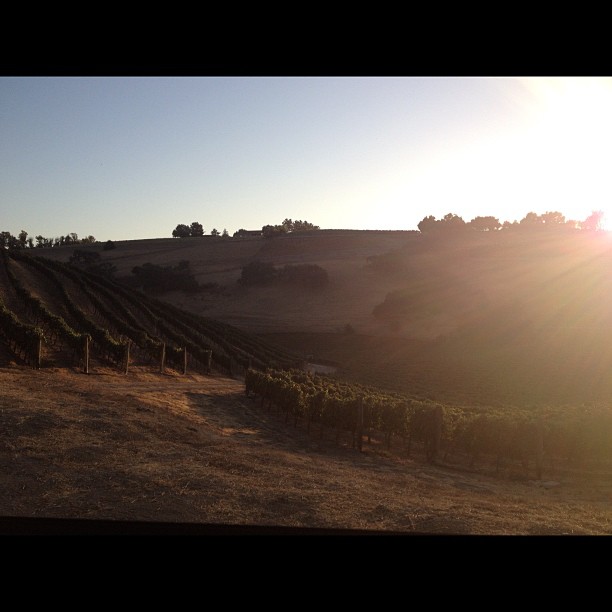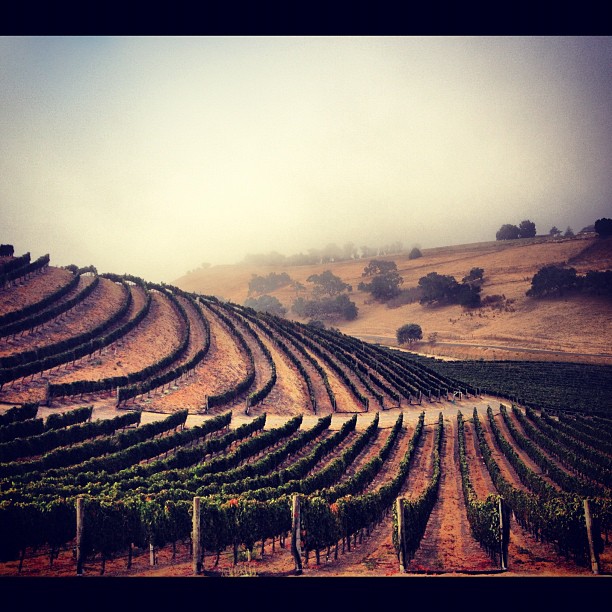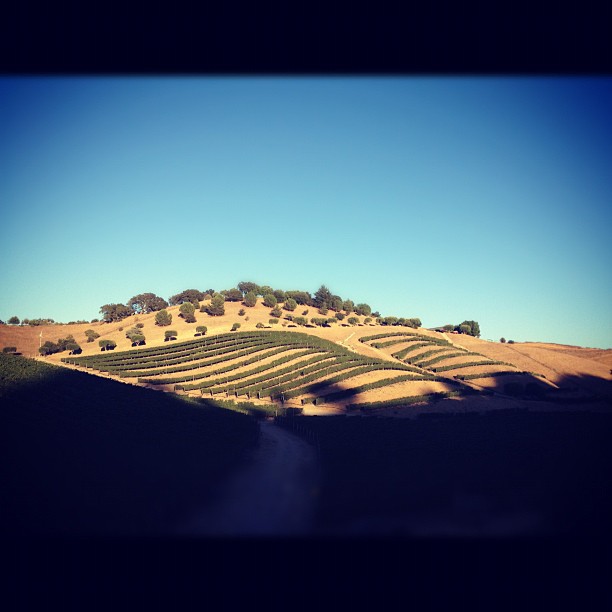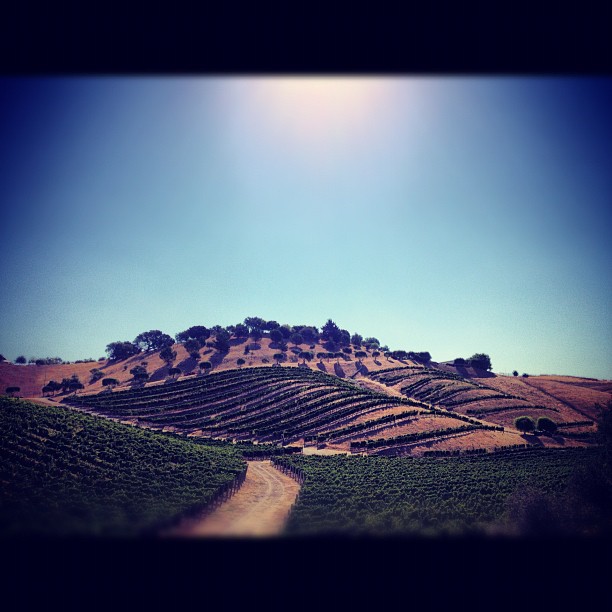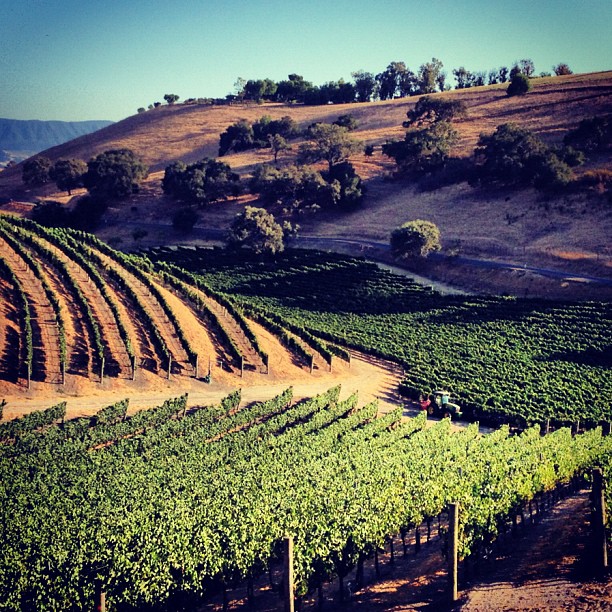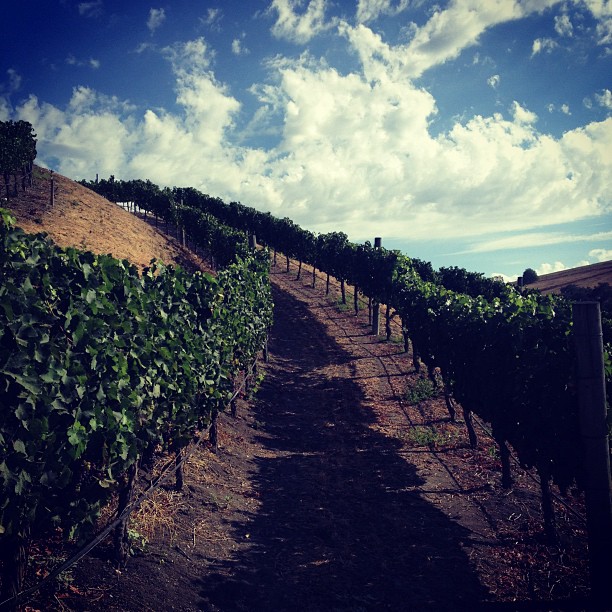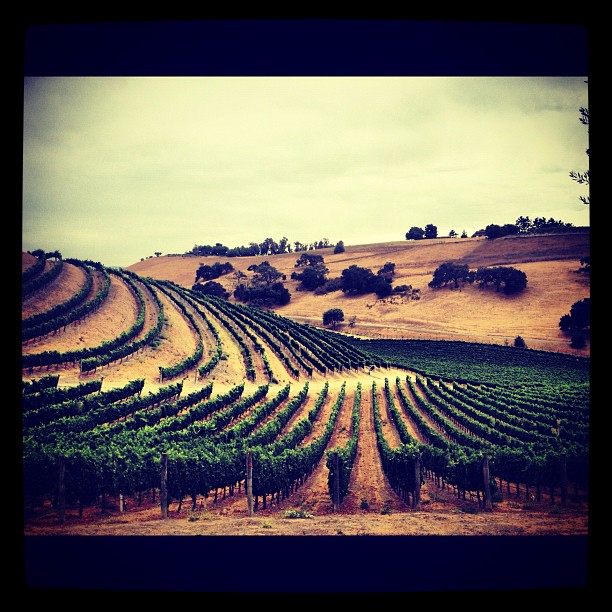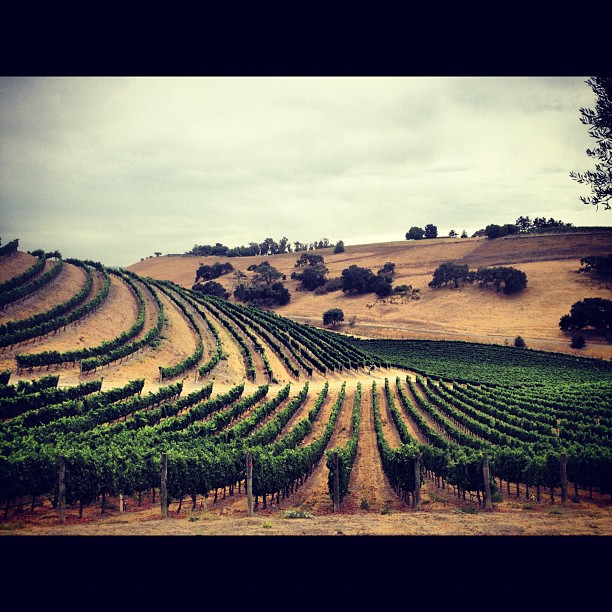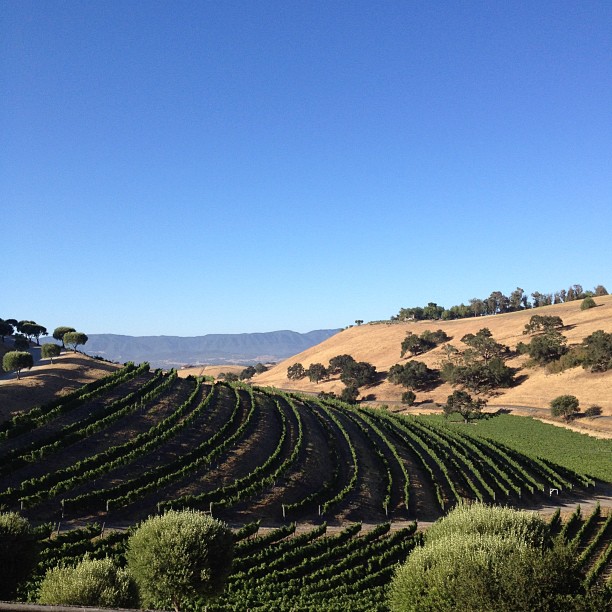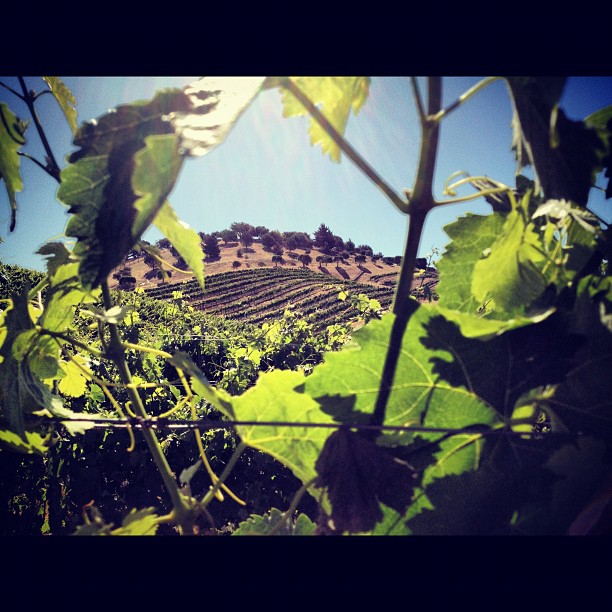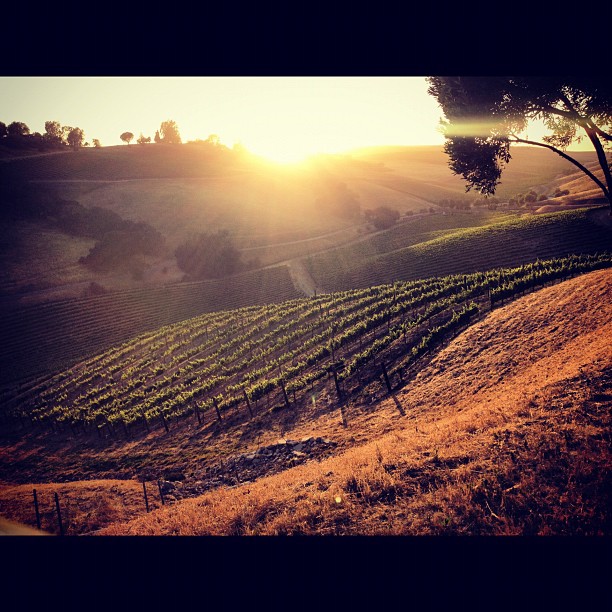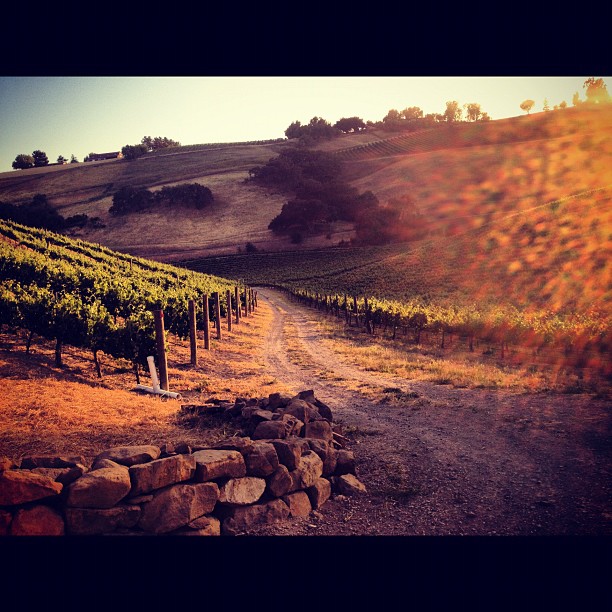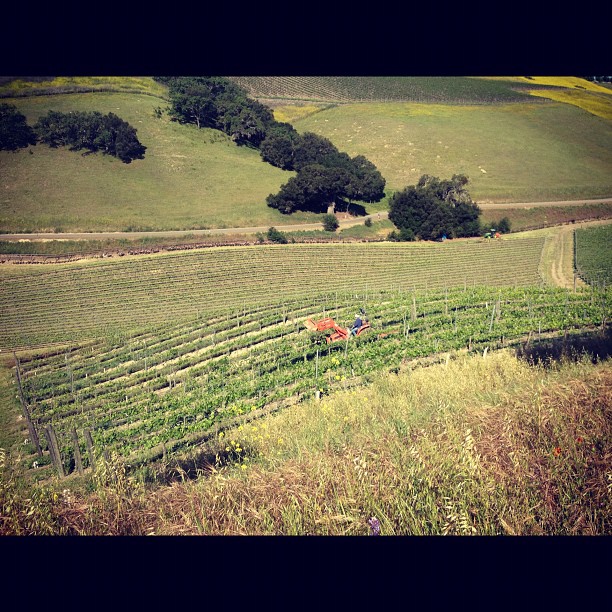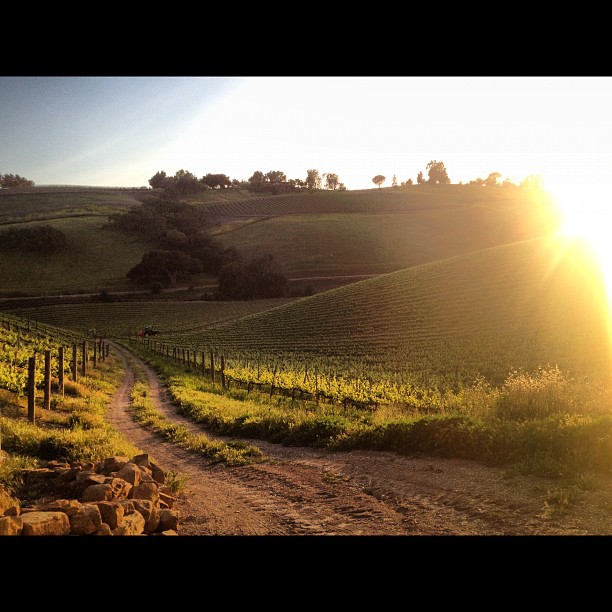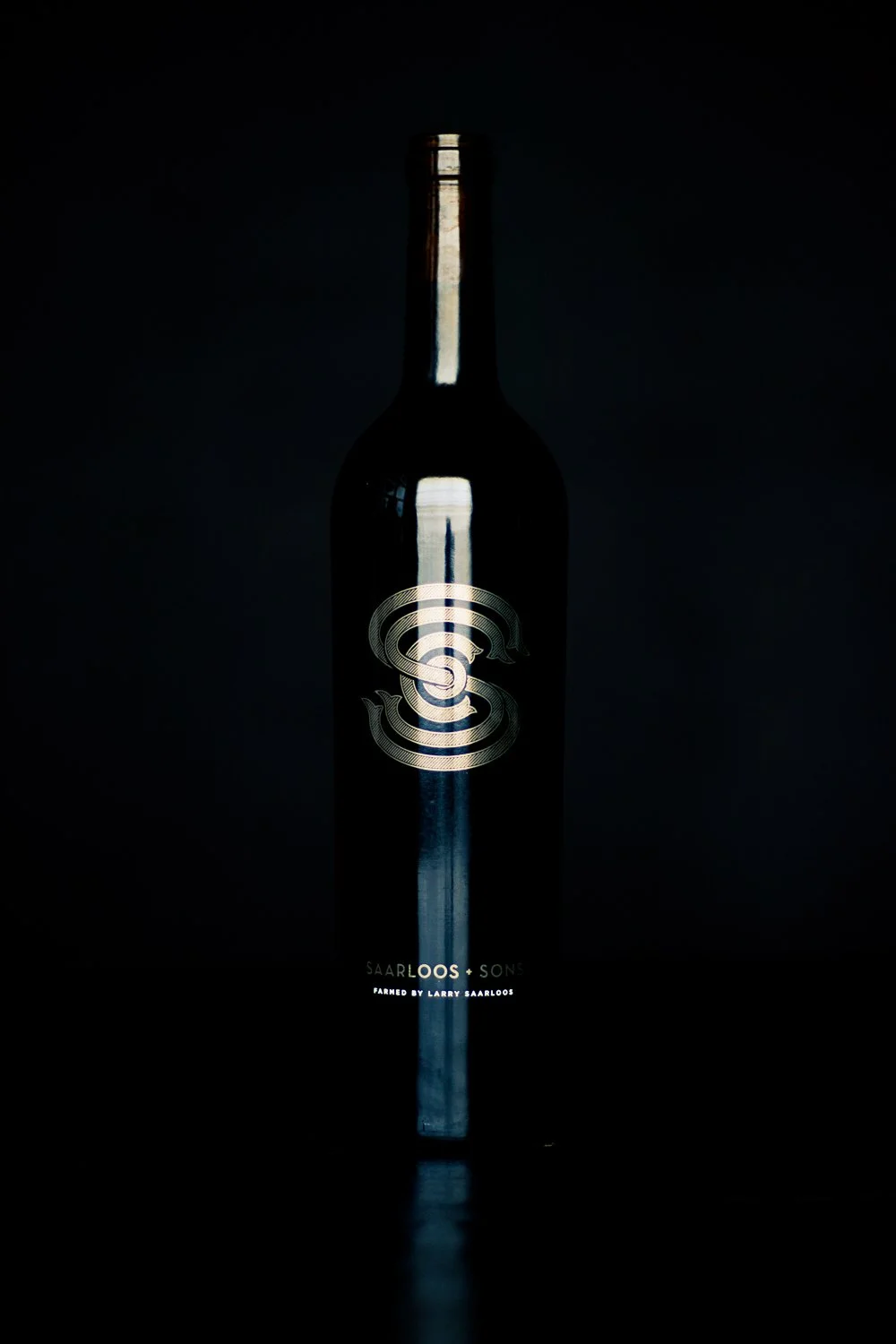FatMan // Estate Syrah // 2013
FatMan // Estate Syrah // 2013
100% Estate Ballard Canyon Vineyard
Ballard Canyon AVA
Hand Picked by Family in 2013
Barrel Aged 2 Years
Bottled in 2015
Bottle Aged 1 Year
I know what I want to say about this wine, I just don't know how to say it yet.
When I name Wine for my Grandfather. It is always my favorite.
The Fat Man Terrace is our largest terrace on the Windmill Estate Vineyard.
The Other Two are the Littleboy Terrace and the High Hill.
The Fatman terrace comprised of 12 steps and a total of 25 rows of vines. It is without a doubt the Keynote location on our vineyard. You can see from the little slideshow below.
We harvest these three different Syrah blocks as close in time as we can. We have always harvested the Little Boy and the Fat Man terraces on the same day. For the last two years, we have Harvested them all on the same day. We also do our best to farm all three of the Syrah Blocs the same way all year long. We could easily blend all three of these locations into one one and have the "Saarloos Estate Syrah". Most people do that, it's easy, we would only have to make one label, and no one would be the wiser. But easy just isn't our style. And hiding all of the unique aspects of each of these individual spots would be a travesty.
These 3 locations are a couple of brothers. They have the same DNA, they were raised in the same house, by the same parents, and were treated the same. We would have never these brothers to be the same would we? Of course not. Each brother or sister would have their characteristics that were formed by their relationship to the other. I know I would be a much different person if I was the youngest in my Family or even the middle child. The relationship to each other helps craft the individual location to another. Furthermore, I would never want to be looked at and judged as a unit; I believe we all strive to be seen as individuals. You see the High Hill Bloc of Syrah receives the first light of day on it. It also is hit first by the wind and blocks and diffuses the wind for the other terraces. The High Hill also has the most typographical change and is the Largest of all three of the blocks. While the Fat Man terrace is the Largest of the two terraces, it produces less than Half and little above 1/3 of the overall tonnage that the High Hill produces. There are only 12 Steps in the Terrace containing only 25 rows. This hill was terraformed to “create land” it is extremely hard to keep consistent. Think about watering the top of a hill like dropping small ball bearings. They like water will always flow to the bottom of the hill. So trying to water and they keep each of the vines as consistent as possible across all of the rows as they bend over the terrace as well as keeping them consistent from the bottom of the hill to the top is like spinning plates. Thus this dramatic location needs constant attention and correction just to keep them uniform and producing uniform fruit. Finally, the Little Boy is the Baby of the Family. Historically we can expect between only half a ton to 1.5 tons each year. That equates to less than 75 cases of wine from this location a year. This is a tremendous amount of work for less than a 1 ton of fruit a year. We have to treat and work these vines just as we would vines that produce twice to 4 times as much production. It is without a doubt the most difficult place on our vineyard to work, all of that effort for so little production. Now, I will stop talking like a farmer looking for weight and tonnage to sell. These High-Stress Environments are what create amazing grapes. Each vine must struggle and work to provide for their fruit, and in turn, that fruit is dark rich and bursting with flavor and depth. It is that depth and that stress that translates to wine that has characteristics that are age-worthy and give you a sense of place. We work each of these locations diligently and passionately and with vigilance. These brothers are as diverse as they come. Each is fighting for survival and their place in the world. You can see why we keep each of them separately and allow them to shine on their own.
On the Label is Gilbert Saarloos - This photo was taken from the wedding Photo of my Grandparents, Bertha and Gilbert in 1945. Here Elmer stands immediately, to Gilbert's left and next to Elmer is Harold Saarloos and Popcorn Bob.
A little more about the Ballard Canyon AVA
PAST
The area now known as Ballard Canyon has a rich history and tradition as a farming community. In 1974, Gene Hallock founded the Ballard Canyon Winery, on what is now Rusack Vineyards. In the 90’s, the Stolpman, Beckmen, Harrison, Larner, and Saarloos families planted vineyards, followed by Jonata and Tierra Alta.
After the planting boom of the 1990s, vintners including Kimsey, Jorian Hill, and Rancho Boa Vista planted vineyards focused on Syrah and Rhone varietals. Meanwhile, land to the west became increasingly devoted to Pinot Noir and Chardonnay with the publication of the STA Rita Hills AVA.
Every Ballard Canyon vintner participated enthusiastically in pouring over maps, collecting weather data, and scouting ridgelines. Our research paid off when the TTB recognized Ballard Canyon as a unique winegrowing area and published our AVA on October 30, 2013.
PRESENT
The greater Santa Ynez Valley AVA is sprawling and unwieldy, covering more than a thirty-mile east-west corridor, 77,000 acres of winegrapes and more than 60 different winegrape cultivars (and over 200 different ‘clones’). That AVA was developed at a time when it was important to describe the new winegrowing region in the broadest strokes possible, as viticulture was still in a primitive and ignorant state in the Central Coast of California.
Ballard Canyon, encompassing just 7,700 acres, provides a much tighter focus as it accounts for only 10% of the Santa Ynez Valley AVA. The north-south oriented canyon offers a unique weather pattern of the wind, fog, and maritime influence, giving each wine a fingerprint of the particular place.
Today, there are 17 vineyard members of the Ballard Canyon Winegrowers Alliance, nine of which produce and bottle wine.
After experimenting with many different varietals, the growers and producers of Ballard Canyon agree that Syrah is the best-suited varietal throughout Ballard Canyon. Over half of the AVA’s planted acreage is Syrah, and an additional 30% of acres planted to other Rhone varietals including Grenache, Viognier, and Roussanne.
Stylistically, the wines can be defined as cool-climate (Sta. Rita Hills), warm climate (Happy Canyon of SB), and the marginal areas that are influenced by both. The proposed Ballard Canyon AVA represents this critical mixed environment: the greatest wines in the world grown in areas that are on the edge of where the varietals can get fully ripe.
As the only AVA dedicated to Syrah, Ballard Canyon has emerged as the “home” of Syrah in America.
FUTURE
Ballard Canyon encompasses a small geographical area totaling 7,700 acres, of which only 550 acres are planted to vineyards. This leaves a lot of room to grow, and a lot of people excited about the potential for this small but mighty wine region.
Based on the quality produced, Ballard Canyon’s reputation is continuing to grow within the world of boutique wine. Both our dedication to Syrah, a niche varietal in the global market, and our small scale; removes us from the world of mass-produced wine.
We look forward to many more great vintages to come out of Ballard Canyon. Beginning with the 2012 and 2013 vintages, Ballard Canyon’s Grower-Producers now package estate-grown Syrahs in a custom mold with the words BALLARD CANYON encircling the bottle shoulder, raised in the glass. This bottle will become synonymous with great Syrah.
